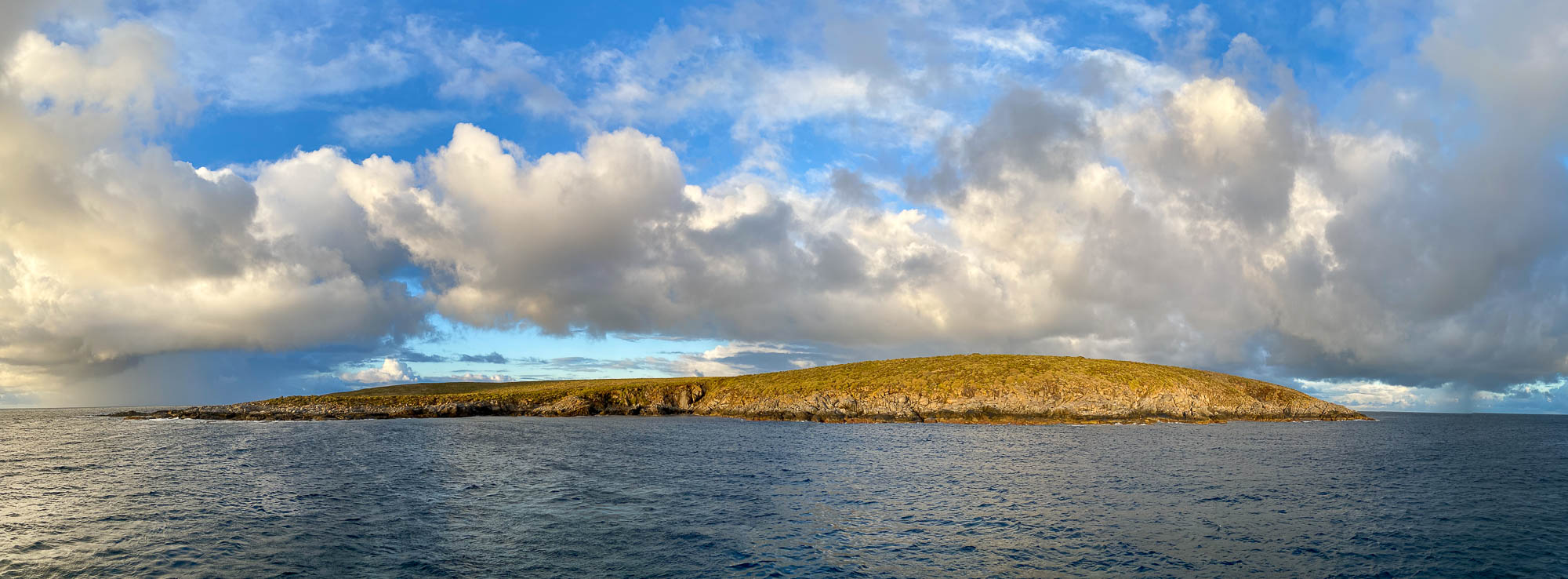I recently joined friends for a 10-day dive trip on the M/V Rodney Fox in South Australia organized by Richard Salas. Richard organizes great trips and this one was no exception; we had a lot of fun and saw many new critters. The trip was intended to be a sampler offering a potpourri of locales and species and it delivered. A little flexibility was needed to work around some weather that was pushing up from the south, but in the end we managed to see all the things we hoped for. My flight connections were LAX / Brisbane / Adelaide / Port Lincoln and were uneventful. I budgeted a few days in Port Lincoln to adjust to the time and let bags catch up if need be. Then it was off on the Rodney Fox, a 100′ (32m) steel-hull boat with 9 guest cabins, large dive deck, big galley and salon, and sundeck on top with a couple tenders. I had a small cabin on the top deck and enjoyed looking out over the water from my bunk.
Australian Sea Lions
Our first stop the following morning was the Neptune Islands for some white shark cage diving, but once the cages were in the water we found that the south swells made that untenable. While disappointed, we adjusted and relocated to Grindal Island, home of a small colony of Australian sea lions (Neophoca cinearea). We spent some time freediving with them and I made a few images I’m happy with. This was a species I have wanted to see for many years, and they were as charming and elegant as I anticipated. I’m already planning a 1-2 week return focused only on Australian sea lions. They are special and among pinnipeds that I have met there are few who are as fun to be with in the water.
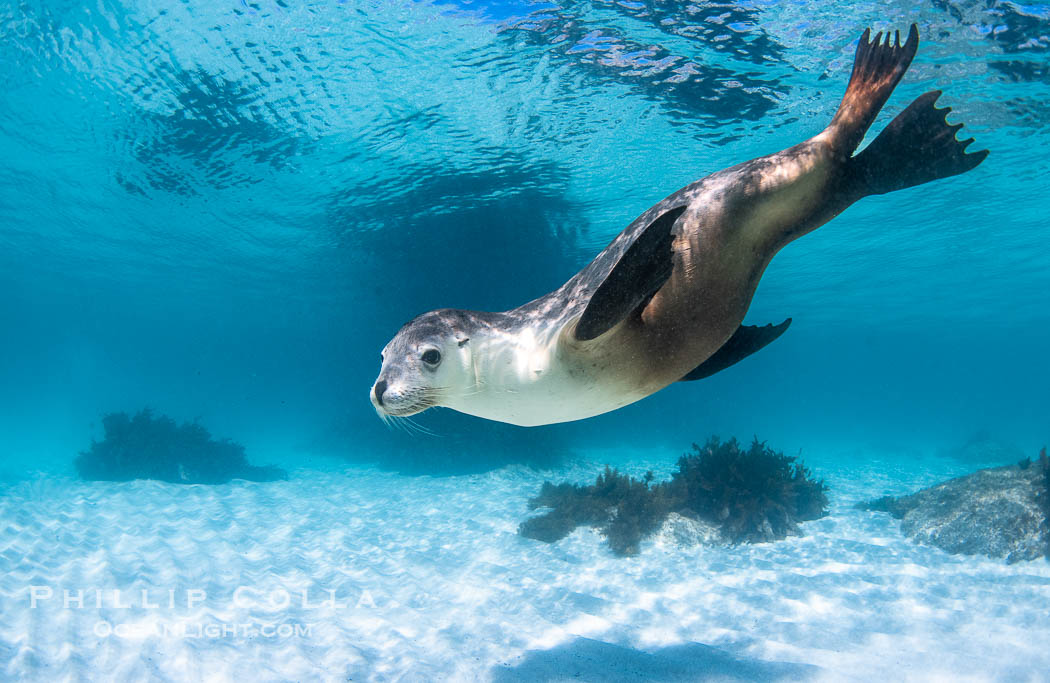
Australian Sea Lion Underwater, Grindal Island. Australian sea lions are the only endemic pinniped in Australia, and are found along the coastlines and islands of south and west Australia.
Image ID: 39155
Species: Australian Sea Lion, Neophoca cinearea
Location: Grindal Island, South Australia
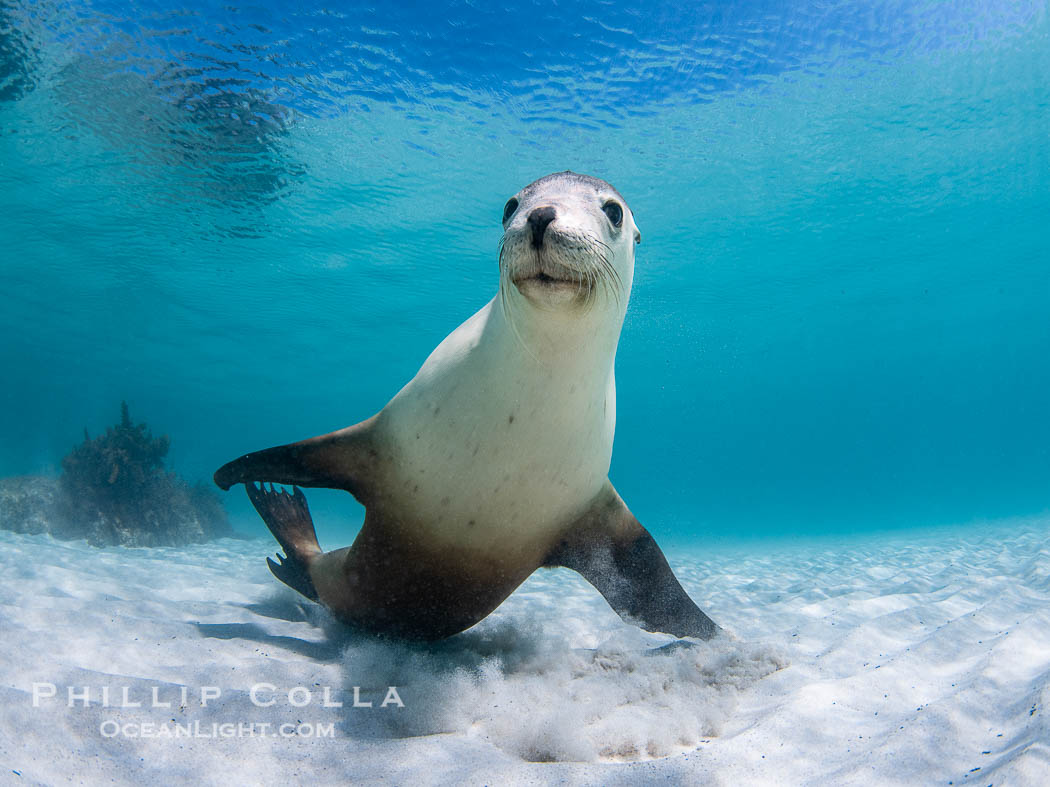
Australian Sea Lion Underwater, Grindal Island. Australian sea lions are the only endemic pinniped in Australia, and are found along the coastlines and islands of south and west Australia.
Image ID: 39156
Species: Australian Sea Lion, Neophoca cinearea
Location: Grindal Island, South Australia
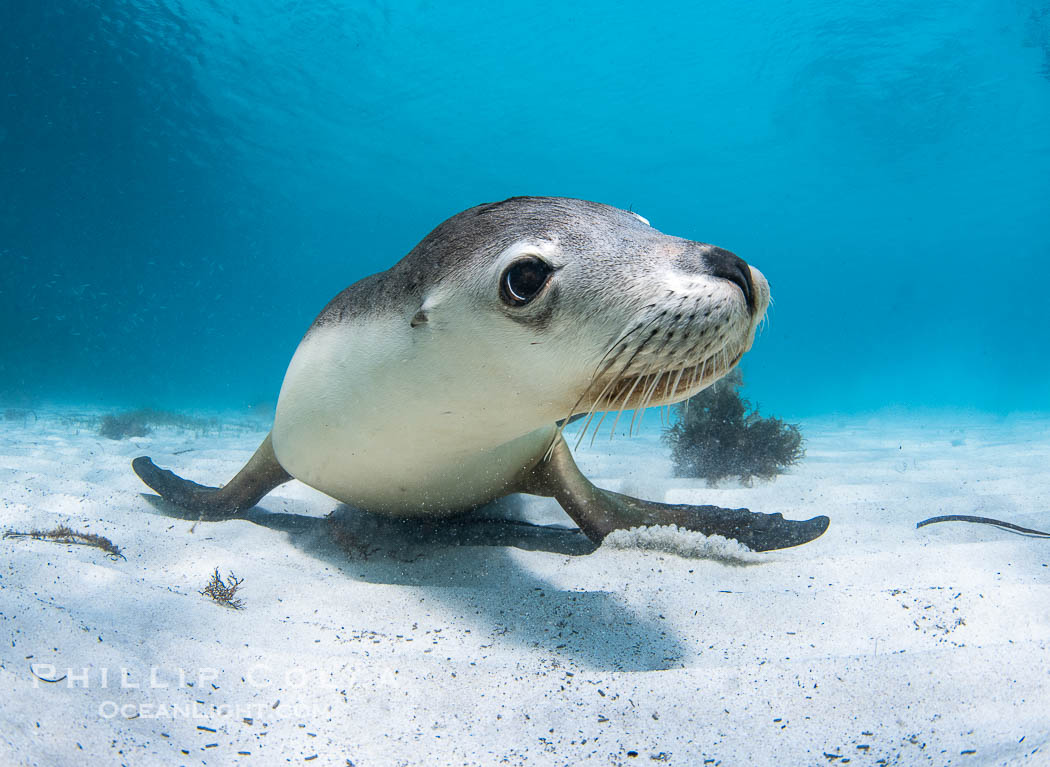
Australian Sea Lion Underwater, Grindal Island. Australian sea lions are the only endemic pinniped in Australia, and are found along the coastlines and islands of south and west Australia.
Image ID: 39187
Species: Australian Sea Lion, Neophoca cinearea
Location: Grindal Island, South Australia
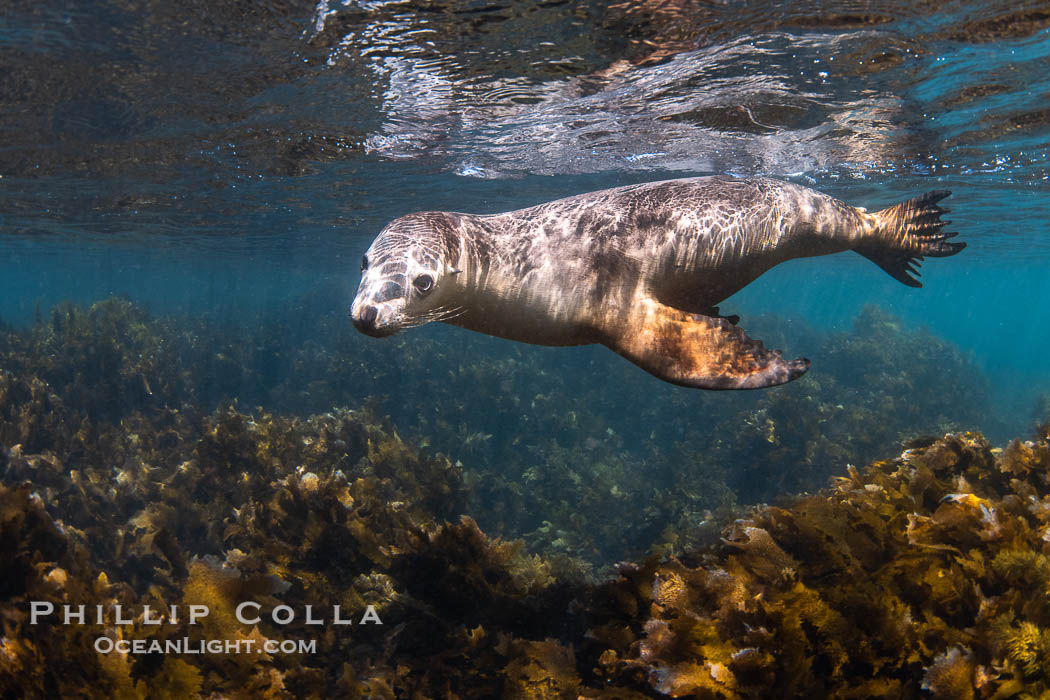
Australian Sea Lion Underwater, Grindal Island. Australian sea lions are the only endemic pinniped in Australia, and are found along the coastlines and islands of south and west Australia.
Image ID: 39192
Species: Australian Sea Lion, Neophoca cinearea
Location: Grindal Island, South Australia
Kangaroo Island
Following our time with the sea lions at Grindal Island, we decided to make an overnight run for the north side of Kangaroo Island to get out of the south swell and wind. Every good dive trip has at least one night of rock and roll swell where you need to sleep crossways on your bunk to keep from rolling onto the floor and this was the night. We awoke the next morning on the north coast of this sparsely-inhabited island. Thus began several days of easy, pleasant diving at Kangaroo Island. The water was warm — about 66-67F which is toasty in a good wetsuit. We usually dove at the foot of high seacliffs and the diving reminded me a little of the exploratory diving we did at Guadalupe Island in the 90s. The sea bottom was covered with dense, short, green- and gold-colored algae. There were plenty of slots, swim-throughs and ledges to explore and a nice variety of fish species. I found a few abalone shells and they were just different enough from the ones in California to make them interesting. I spent most of these dives trying to get portraits of the more colorful of the local fish I could find. I flew my drone a few times to show the boat anchored against the beautiful coastline. We hardly saw another boat, and the weather was super: sunny and warm, with reasonably clear water. We dove exclusively from the tender and not off the main boat.
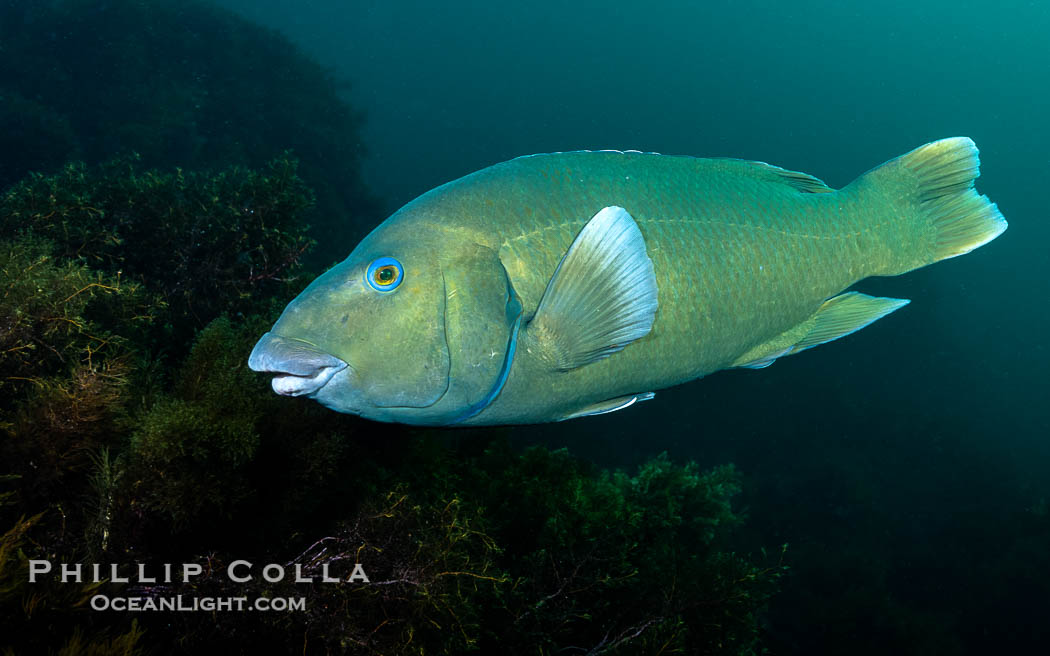
Western Blue Groper, Achoerodus gouldii, Kangaroo Island, South Australia.
Image ID: 39214
Species: Western Blue Groper, Achoerodus gouldii
Location: Kangaroo Island, South Australia
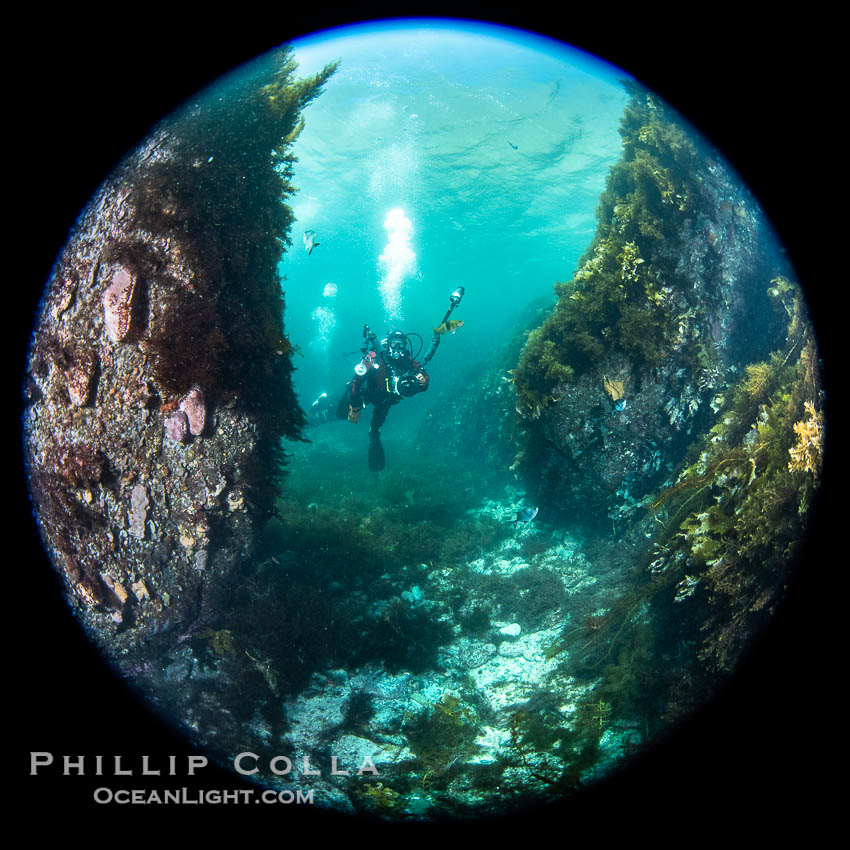
SCUBA Diver Underwater at Kangaroo Island, South Australia.
Image ID: 39216
Location: Kangaroo Island, South Australia
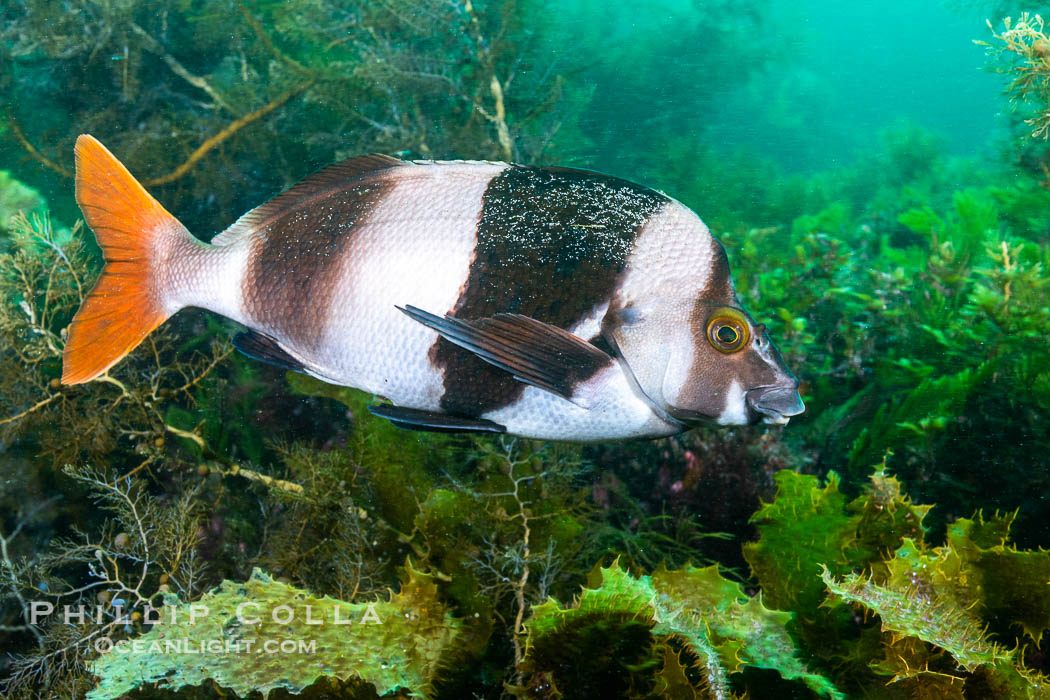
Magpie Perch, Pseudogoniistius nigripes, Kangaroo Island, South Australia.
Image ID: 39222
Species: Magpie Perch, Pseudogoniistius nigripes
Location: Kangaroo Island, South Australia
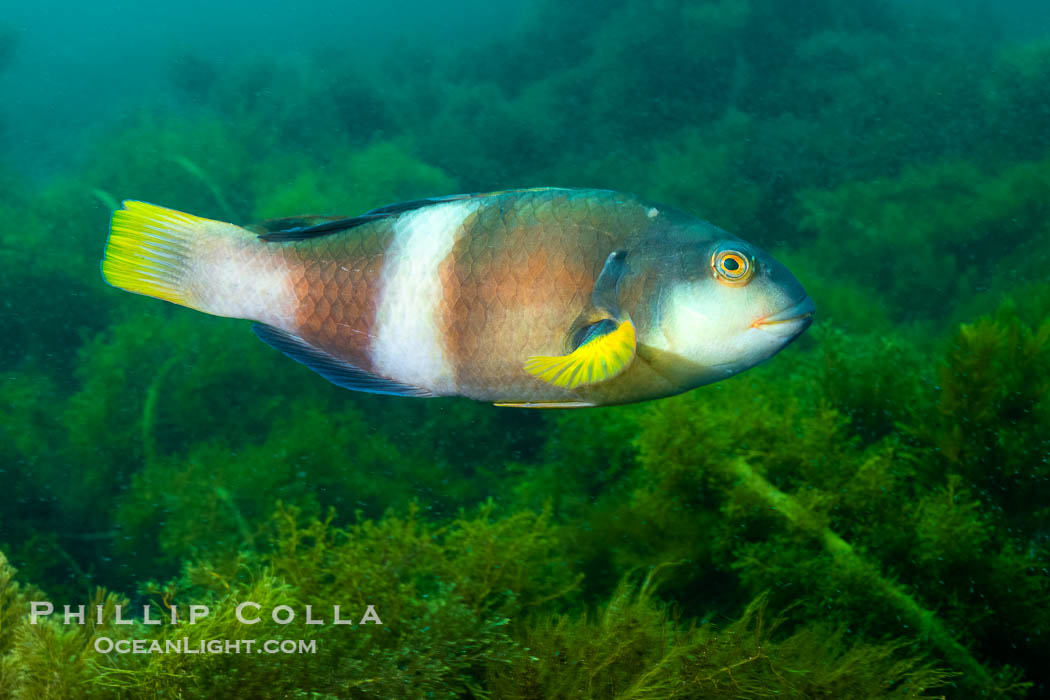
Bluethroat Wrasse, Notolabrus tetricus, Adult Male, Kangaroo Island, South Australia.
Image ID: 39227
Species: Bluethroat Wrasse, Notolabrus tetricus
Location: Kangaroo Island, South Australia
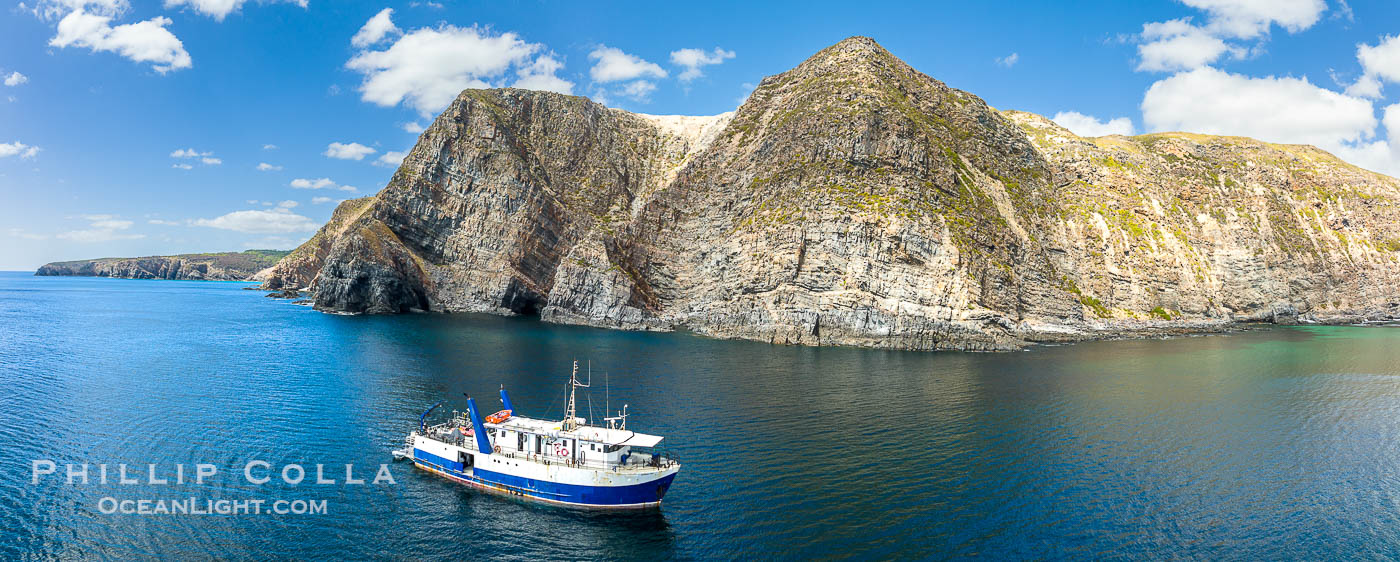
Aerial View of Kangaroo Island North Coast, near Cape Torrens, South Australia.
Image ID: 39228
Location: Kangaroo Island, South Australia
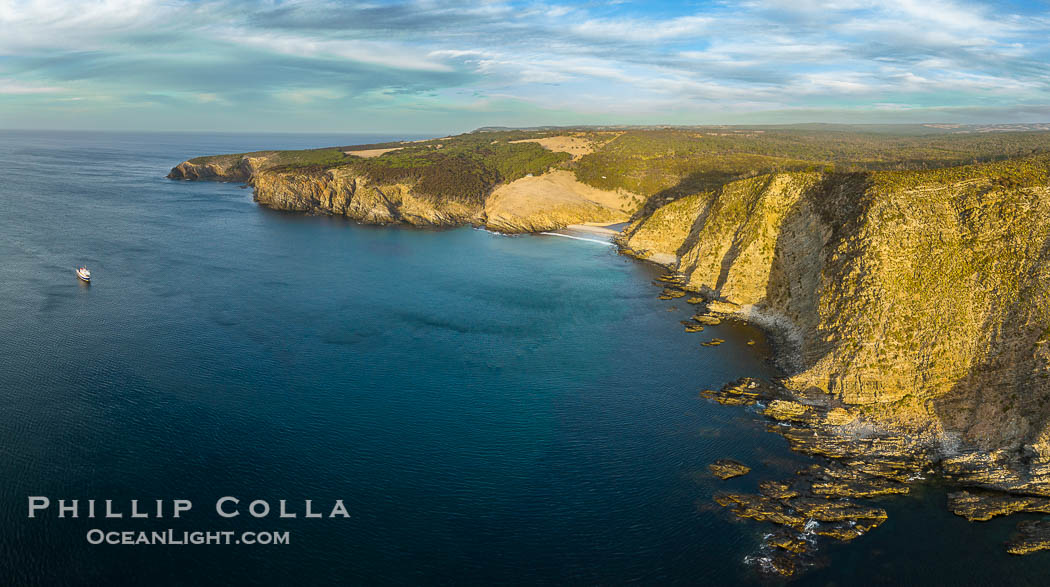
Coastline of Kangaroo Island, Near Cape Borda, Sunset.
Image ID: 39233
Location: Kangaroo Island, South Australia
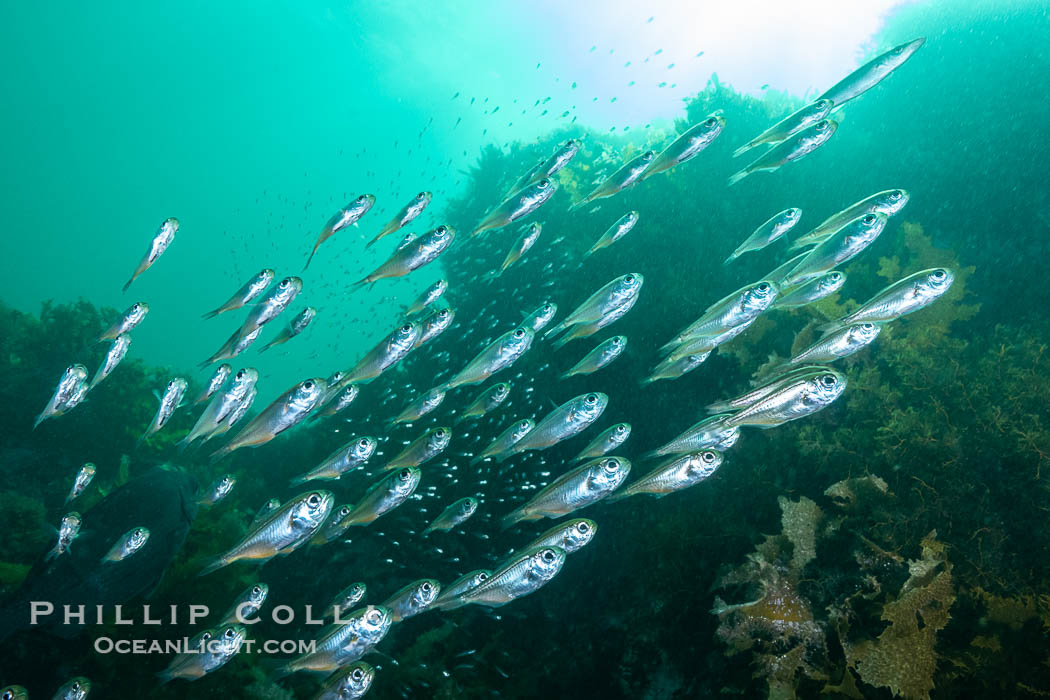
Unidentified Fish, Kangaroo Island, South Australia.
Image ID: 39254
Location: Kangaroo Island, South Australia
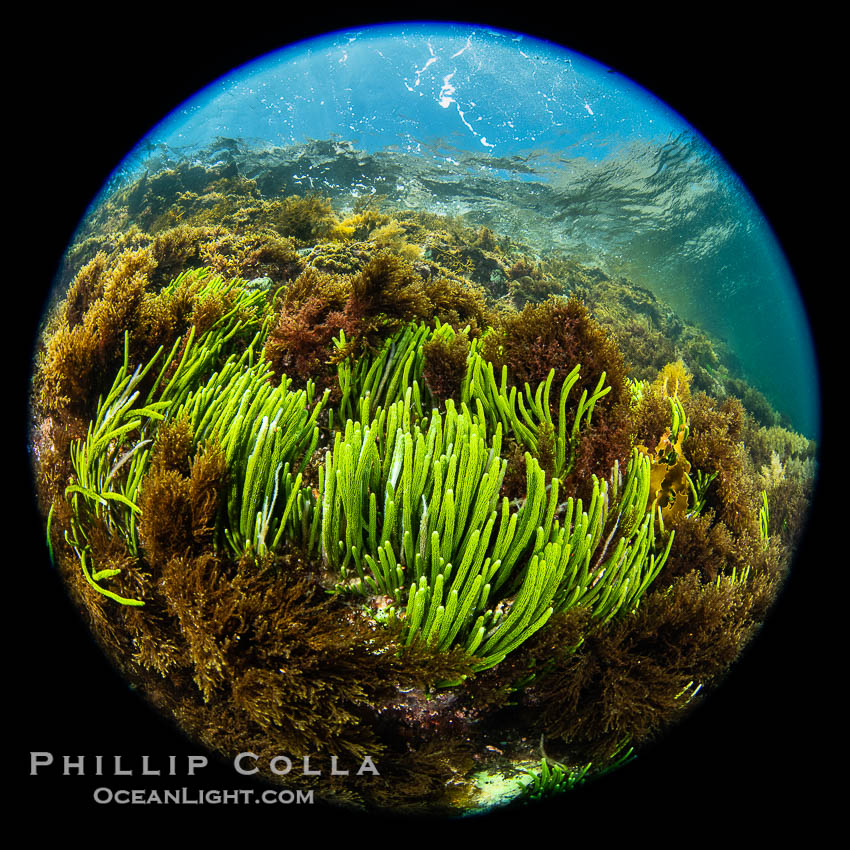
Kelp and Marine Algae Underwater at Kangaroo Island, South Australia.
Image ID: 39299
Location: Kangaroo Island, South Australia
The Wreck of the Portland Maru
Included in our several days on the north coast of Kangaroo Island were a few dives on the Wreck of the Portland Maru. The Portland Maru was a Japanese steam cargo ship built in 1919, 177m long and 5800 tons. She was on her way from Port Lincoln to Japan in 1935 with a load of wheat and struck a submerged object, eventually coming aground near Cape Borda on Kangaroo Island with no casualties. The Portland Maru has disintegrated considerably over the years and is covered with lush algae, but still has some vertical relief including what I was told are the remains of the engine or boiler room, which is where I spent most of my time since that is where a variety of schooling fishes were to be found. If I was to return to Kangaroo Island I would be happy making most of my dives here. The Cape Borda coastline is gorgeous with imposing gold cliffs, and the wreck lies right at the transition of a dark algae-covered seabottom into a white-sandy-bottom bay. Most of the wreck is quite shallow so long, easy dives here are what we experienced.
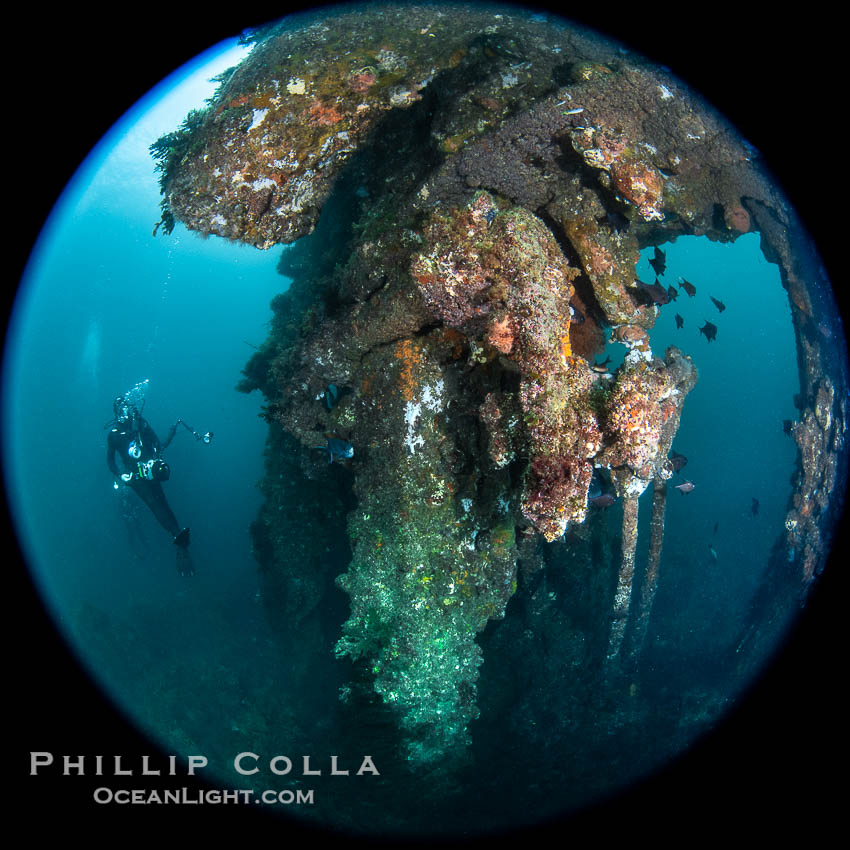
Wreck of the Portland Maru, some structure still visible, Kangaroo Island, South Australia. The Portland Maru was a 117-meter Japanese cargo ship which struck a submerged object and was beached near Cape Borda, Kangaroo Island, on March 19, 1935.
Image ID: 39215
Location: Wreck of the Portland Maru, Kangaroo Island, South Australia
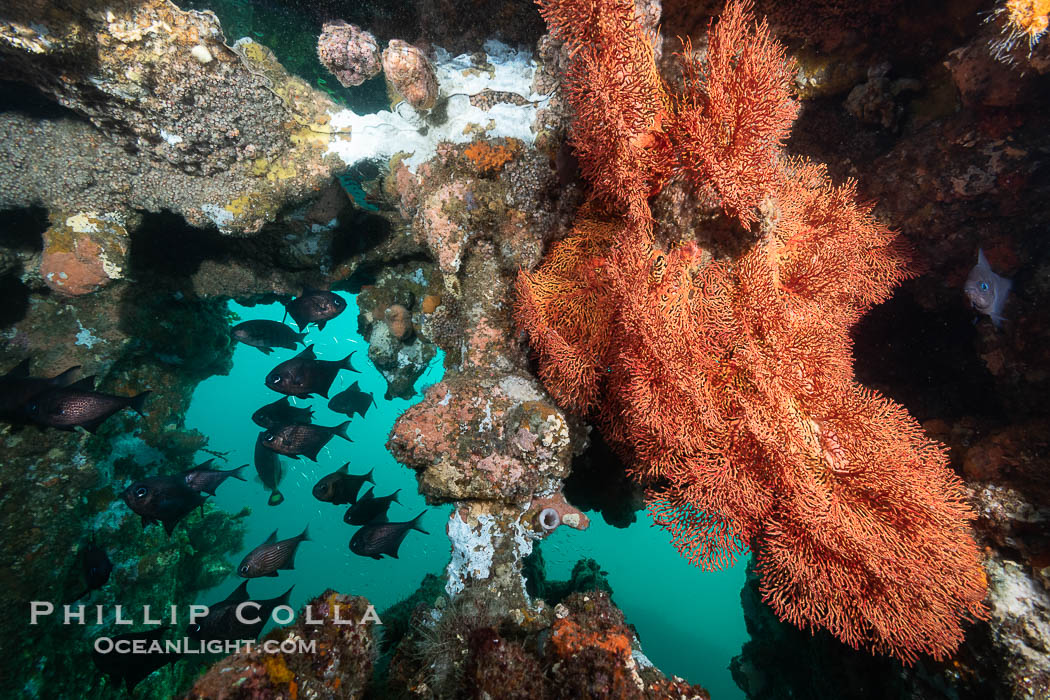
Unidentified Soft Corals, Wreck of the Portland Maru, Kangaroo Island, South Australia. The Portland Maru was a 117-meter Japanese cargo ship which struck a submerged object and was beached near Cape Borda, Kangaroo Island, on March 19, 1935.
Image ID: 39229
Location: Wreck of the Portland Maru, Kangaroo Island, South Australia
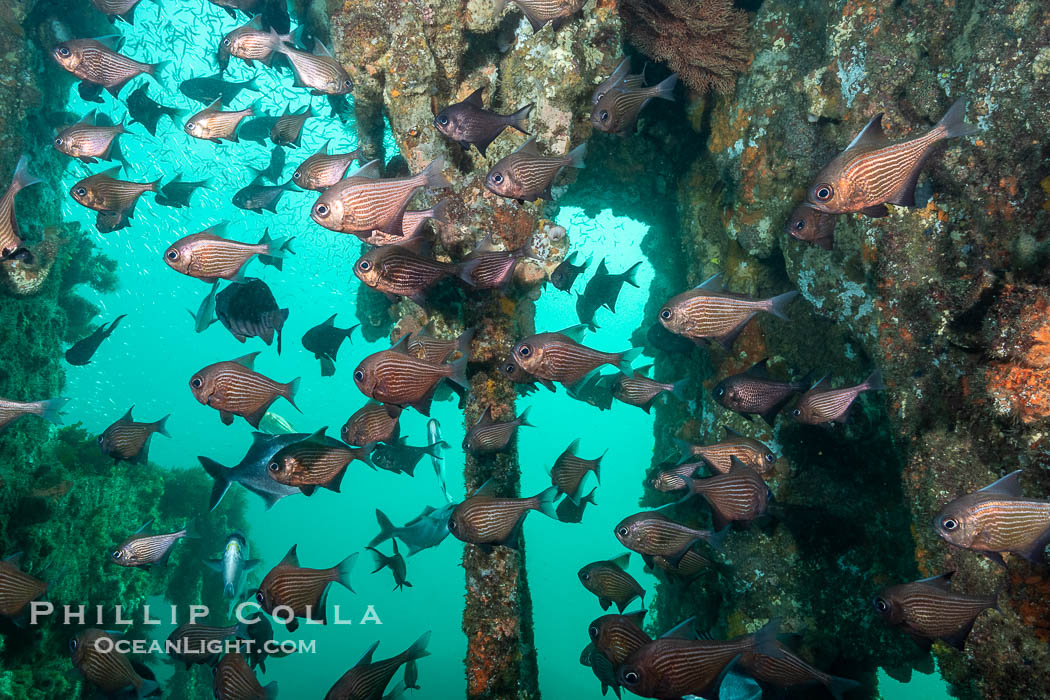
Common Bullseye, Pempheris multiradiata, on the wreck of the Portland Maru, Kangaroo Island, South Australia. The Portland Maru was a 117-meter Japanese cargo ship which struck a submerged object and was beached near Cape Borda, Kangaroo Island, on March 19, 1935.
Image ID: 39231
Species: Common Bullseye, Pempheris multiradiata
Location: Wreck of the Portland Maru, Kangaroo Island, South Australia
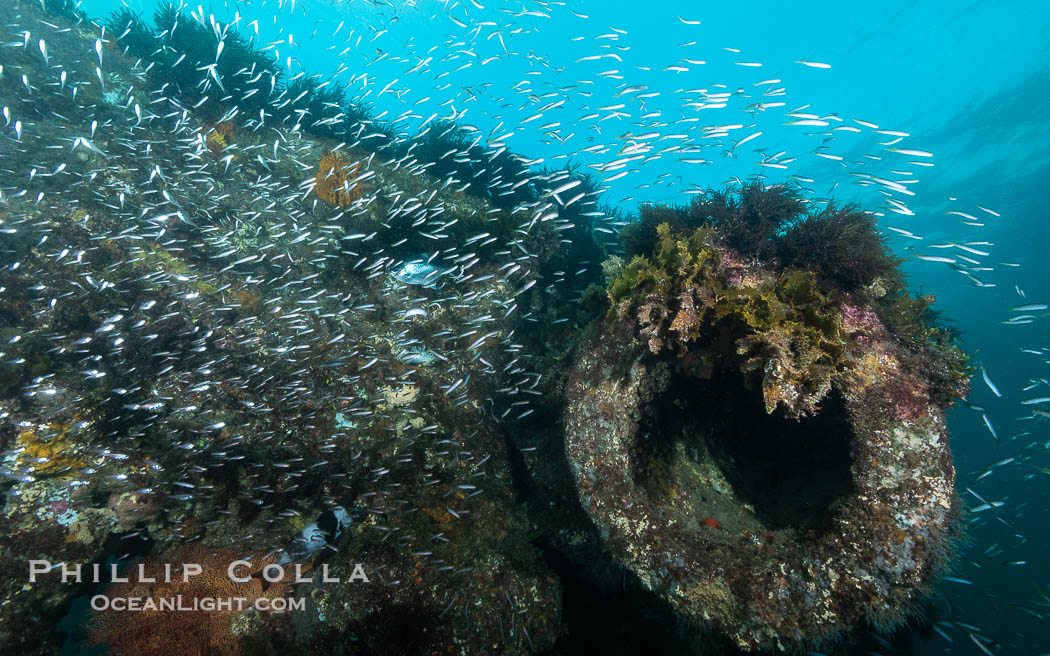
Yellowhead Hulafish, Trachinops noarlungae, schooling on the wreck of the Portland Maru, Kangaroo Island, South Australia. The Portland Maru was a 117-meter Japanese cargo ship which struck a submerged object and was beached near Cape Borda, Kangaroo Island, on March 19, 1935.
Image ID: 39232
Species: Yellowhead Hulafish, Trachinops noarlungae
Location: Wreck of the Portland Maru, Kangaroo Island, South Australia
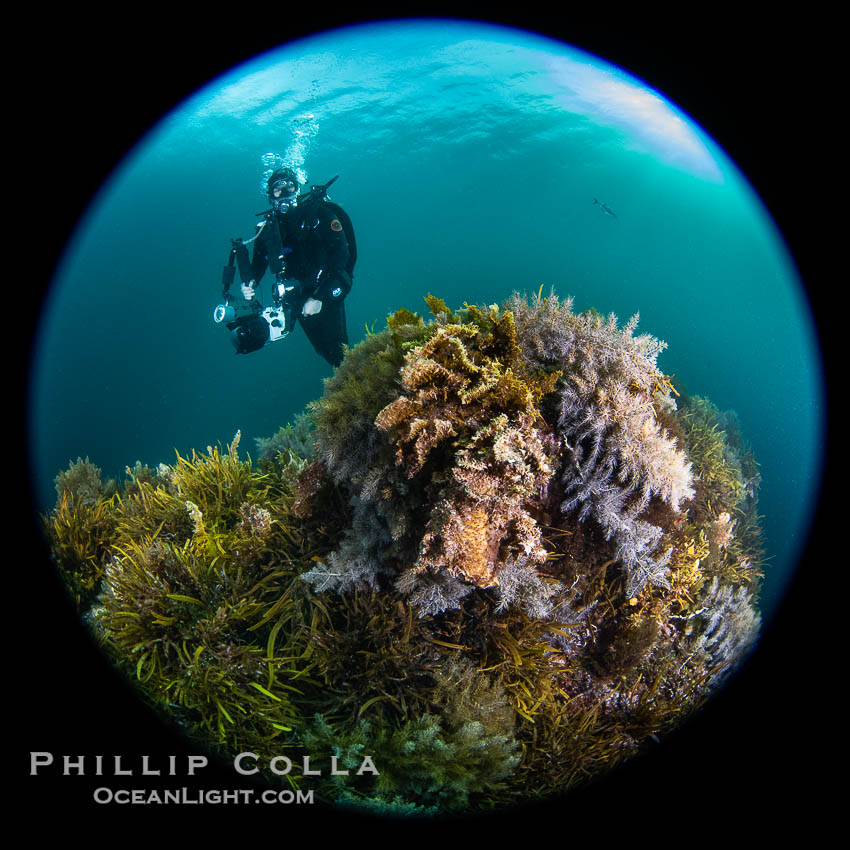
SCUBA Diver Underwater hovering over the Wreck of the Portland Maru at Kangaroo Island, South Australia.
Image ID: 39234
Location: Wreck of the Portland Maru, Kangaroo Island, South Australia
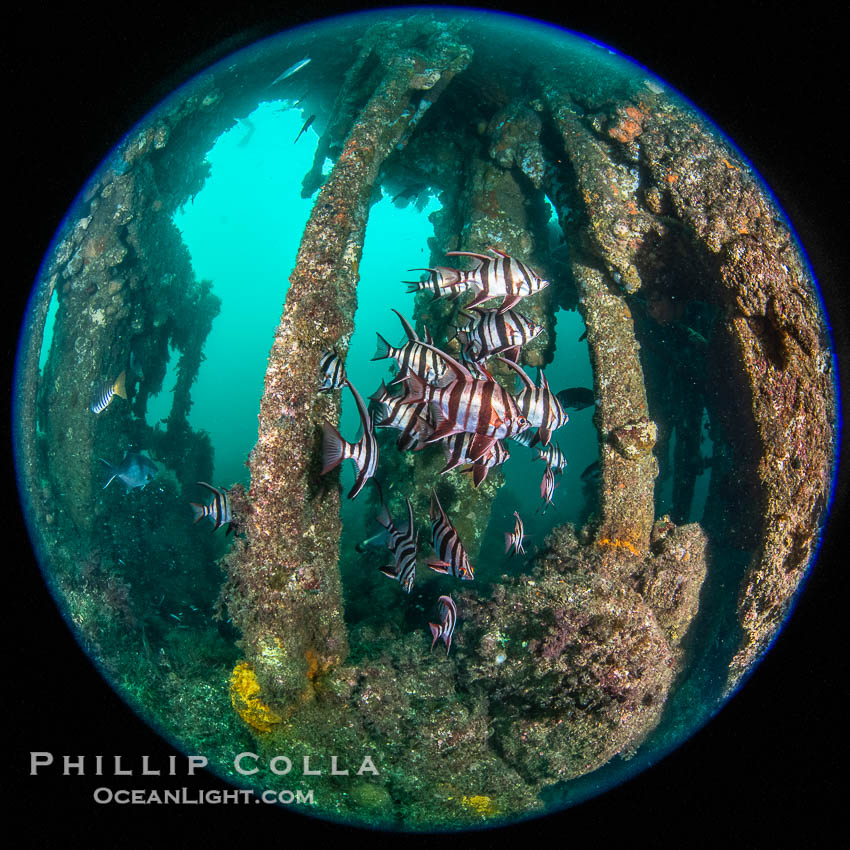
Old Wife fishes schooling on the Wreck of the Portland Maru, Enoplosus armatus. The Portland Maru was a 117-meter Japanese cargo ship which struck a submerged object and was beached near Cape Borda, Kangaroo Island, on March 19, 1935.
Image ID: 39235
Species: Old wife, Enoplosus armatus
Location: Wreck of the Portland Maru, Kangaroo Island, South Australia
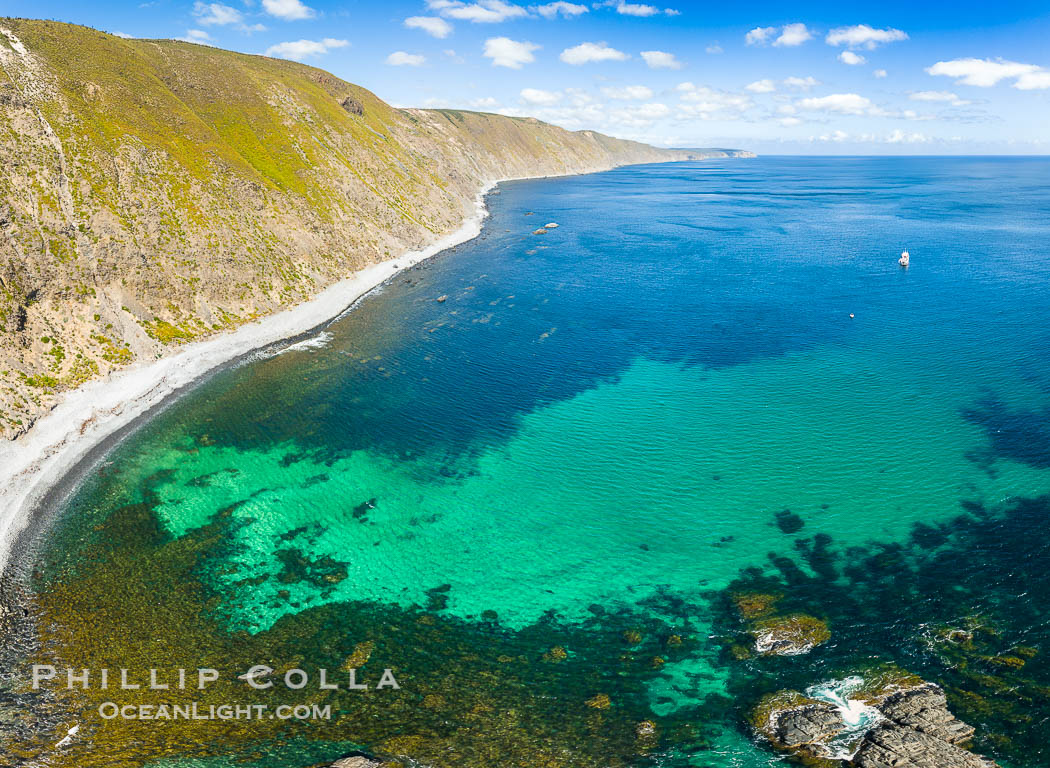
Aerial View of Kangaroo Island near Wreck of the Portland Maru, South Australia. The Portland Maru was a 117-meter Japanese cargo ship which struck a submerged object and was beached near Cape Borda, Kangaroo Island, on March 19, 1935.
Image ID: 39275
Location: Kangaroo Island, South Australia
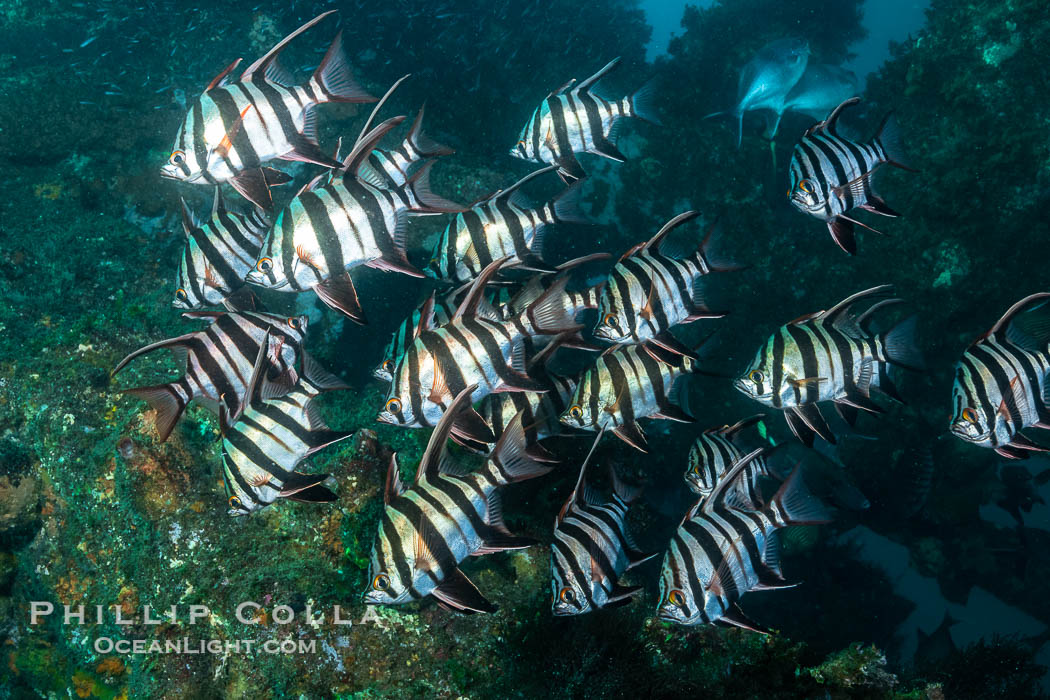
Old Wife fishes schooling on the Wreck of the Portland Maru, Enoplosus armatus.
Image ID: 39280
Species: Old wife, Enoplosus armatus
Location: Wreck of the Portland Maru, Kangaroo Island, South Australia
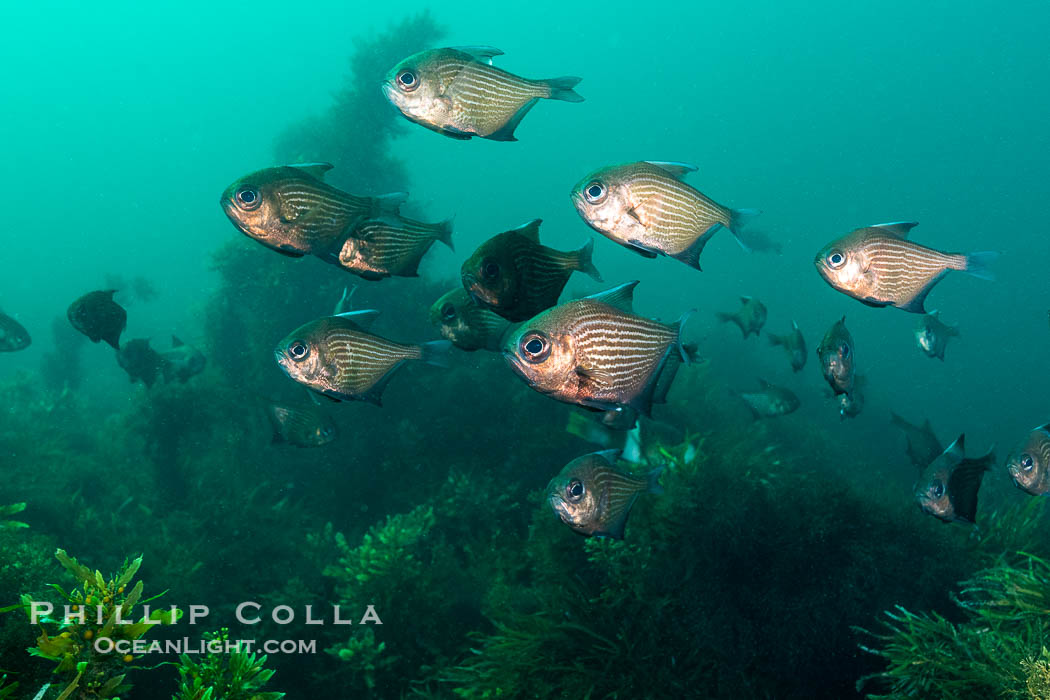
Common Bullseye, Pempheris multiradiata, on the wreck of the Portland Maru, Kangaroo Island, South Australia.
Image ID: 39286
Species: Common Bullseye, Pempheris multiradiata
Location: Wreck of the Portland Maru, Kangaroo Island, South Australia
More Kangaroo Island
Following our dives on the Portland Maru we motored further along the coast and anchored. Sunrise the next morning broke over spectacular headlands, and we then landed on a white sand beach to enjoy a visit to Kangaroo Island itself. We checked out a few national parks, including a stop at Remarkable Rocks which were, in fact, quite remarkable. Back on the boat we motored further and spent one more full day diving Kangaroo Island’s north coast. Since we were in a region that had no real established dive spots, we flew the drone to help figure out what the reef structure looked like and where we ought to go diving. They were good dives, shallow but with superb bottom terrain and relief and a lot of schooling fish on and in the reef structure. As we left Kangaroo Island I reflected on the fact we had jumped in the water at a number of spots that rarely if ever see divers, and that’s the kind of diving I really like to do. During the evening we crossed over to the Yorke Peninsula west of Adelaide.
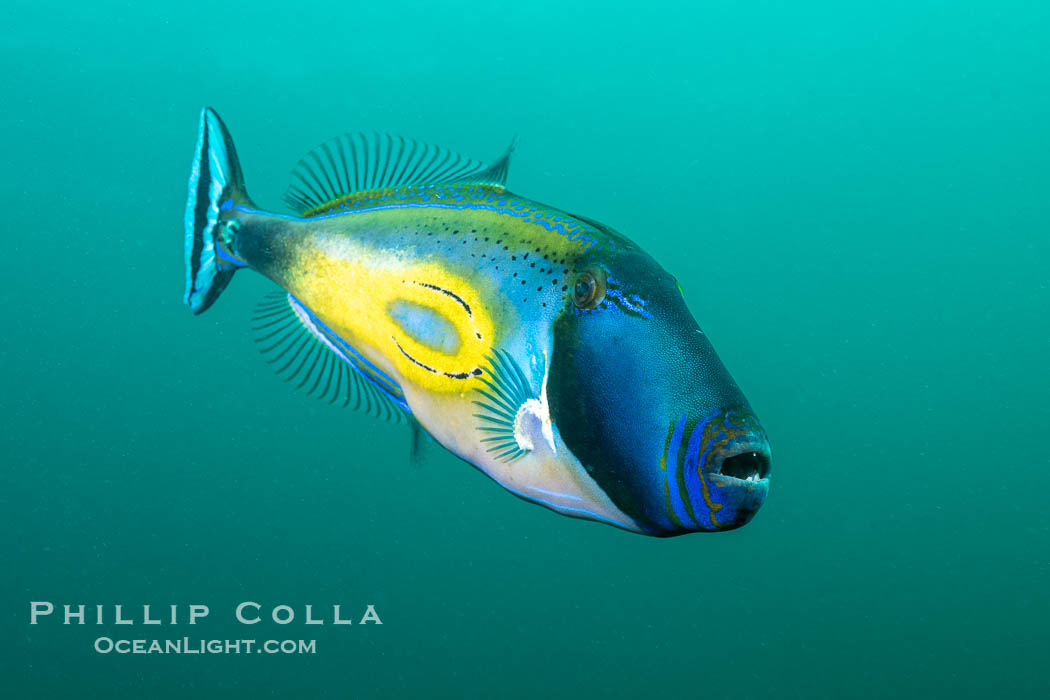
Horseshoe Leatherjacket, Meuschenia hippocrepis, Kangaroo Island, South Australia.
Image ID: 39211
Species: Horseshoe Leatherjacket, Meuschenia hippocrepis
Location: Kangaroo Island, South Australia
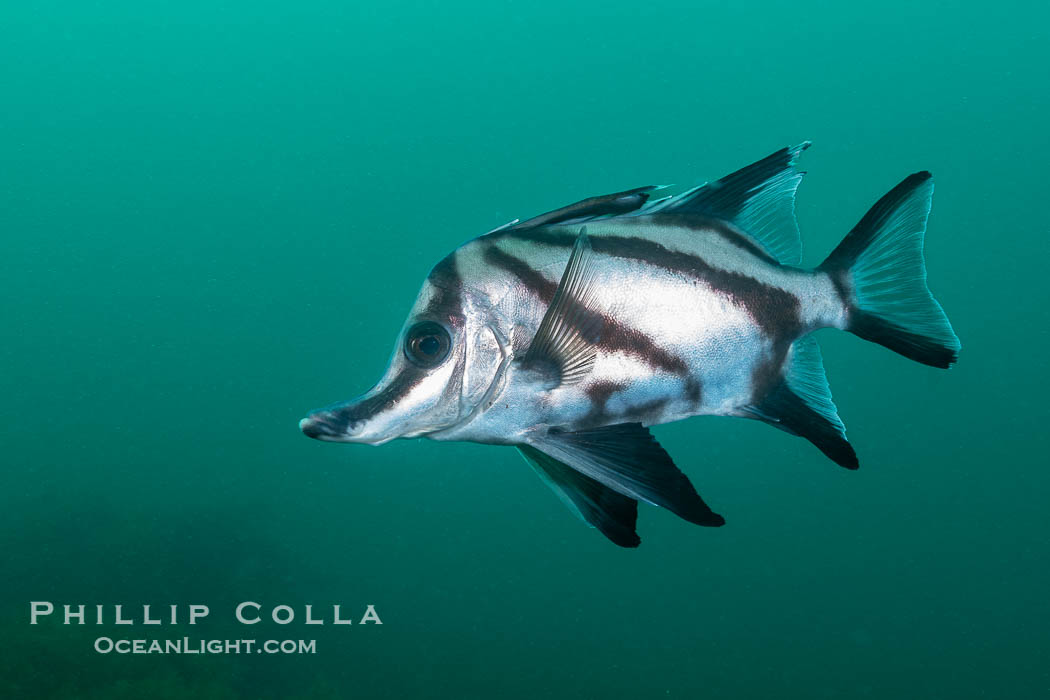
Longsnout Boarfish, Pentaceropsis recurvirostris, Kangaroo Island, South Australia.
Image ID: 39212
Species: Longsnout Boarfish, Pentaceropsis recurvirostris
Location: Kangaroo Island, South Australia
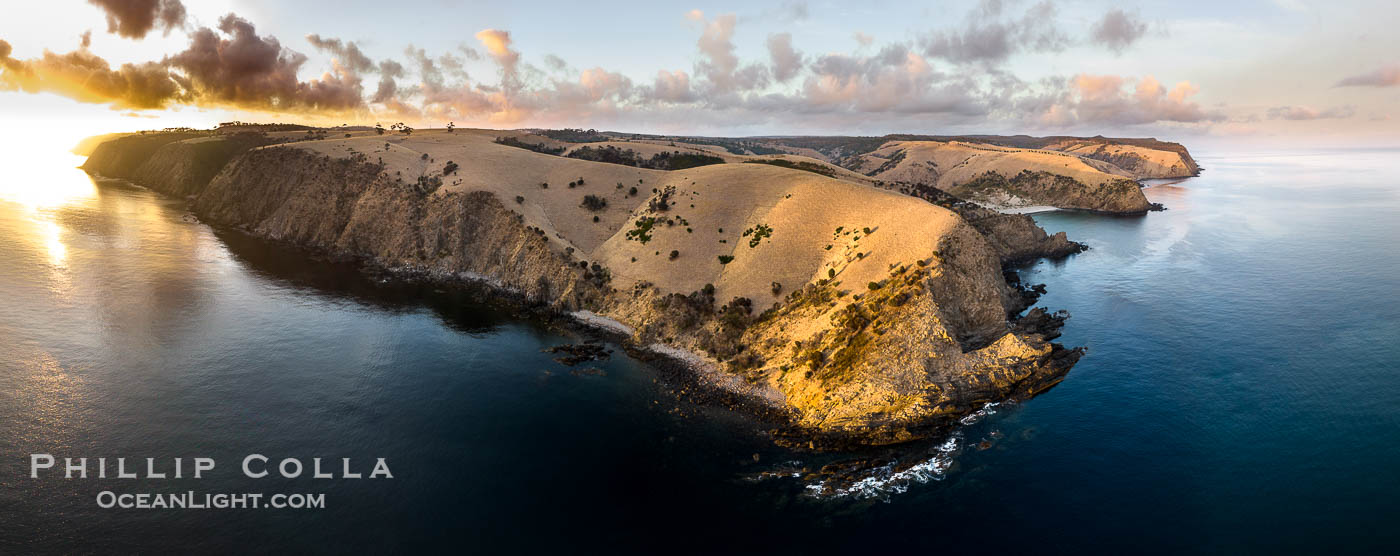
Sunrise on the North Coast of Kangaroo Island, near Western River, South Australia.
Image ID: 39213
Location: Kangaroo Island, South Australia
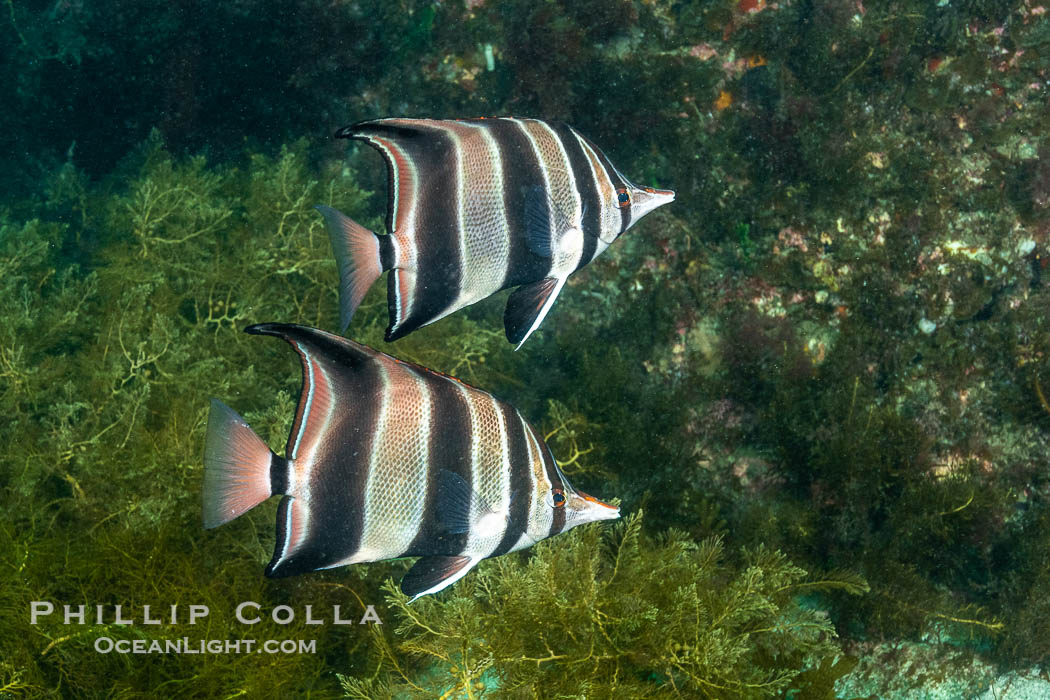
Truncate Butterflyfish, Chelmonops curiosus, Kangaroo Island, South Australia.
Image ID: 39221
Species: Truncate Butterflyfish, Chelmonops curiosus
Location: Kangaroo Island, South Australia

Remarkable Rocks Panoramic Photo. It took 500 million years for rain, wind and surf to erode these rocks into their current form. They are a signature part of Flinders Chase National Park on Kangaroo Island, South Australia.
Image ID: 39224
Location: Flinders Chase National Park, Kangaroo Island, South Australia
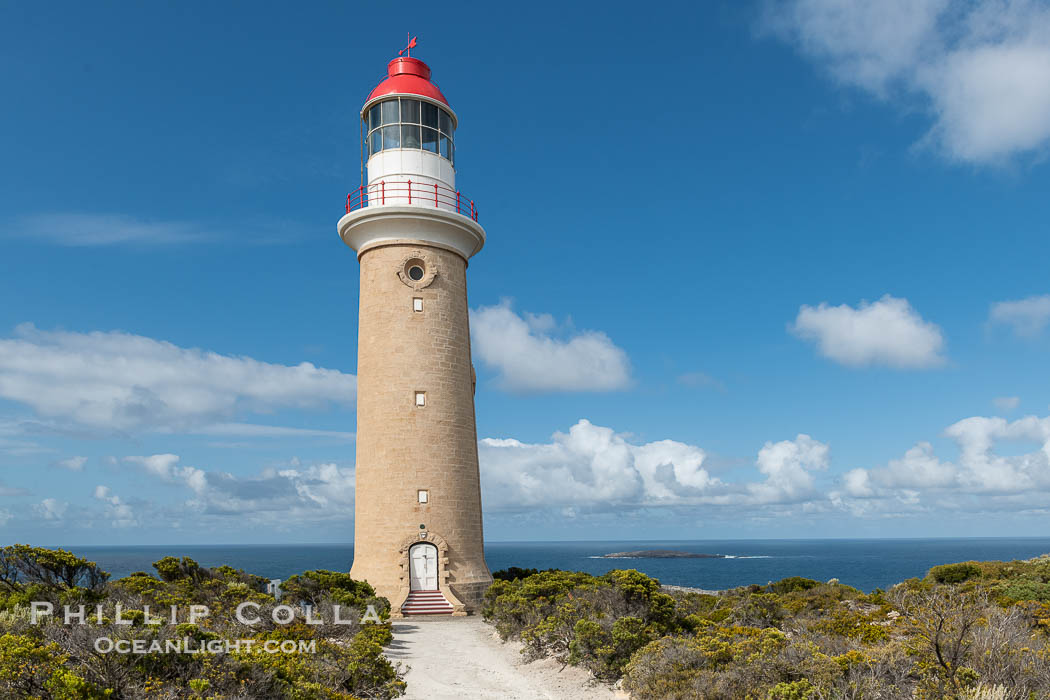
Cape du Couedic Lighthouse, Flinders Chase National Park, Kangaroo Island, South Australia.
Image ID: 39225
Location: Flinders Chase National Park, Kangaroo Island, South Australia
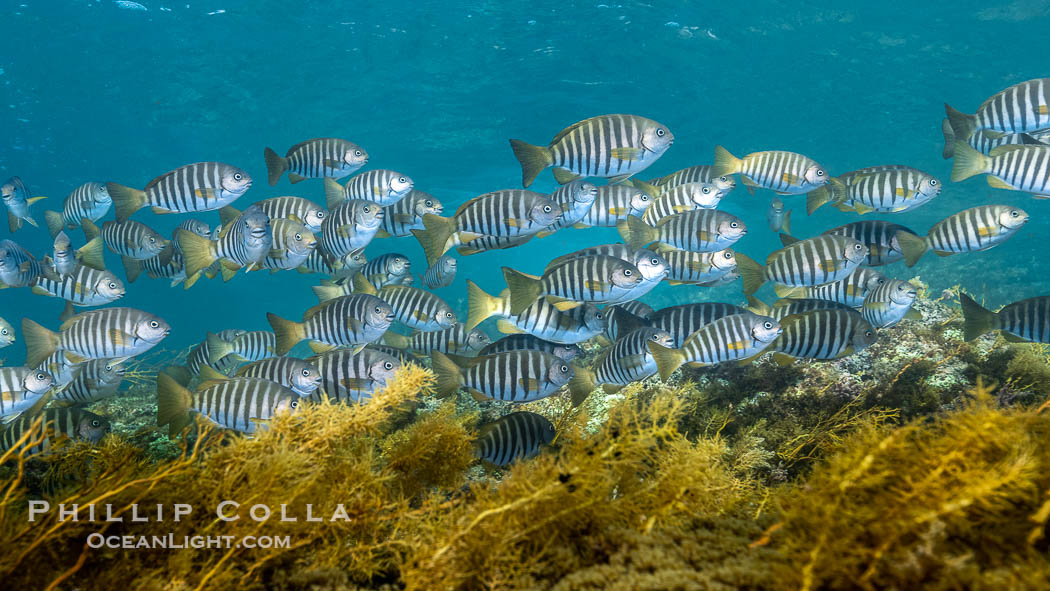
Zebrafish over kelp in shallow water, Girella zebra, Kangaroo Island, South Australia.
Image ID: 39240
Species: Zebrafish, Girella zebra
Location: Kangaroo Island, South Australia
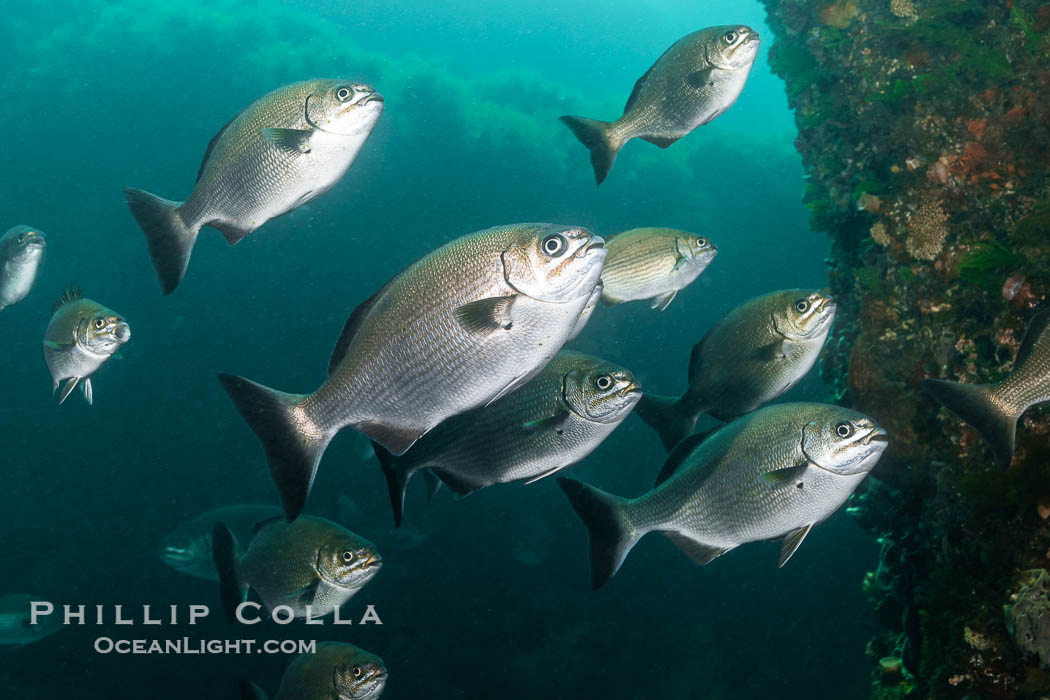
Silver Drummer, Kyphosus sydneyanus, Kangaroo Island, South Australia.
Image ID: 39241
Species: Silver Drummer, Kyphosus sydneyanus
Location: Kangaroo Island, South Australia
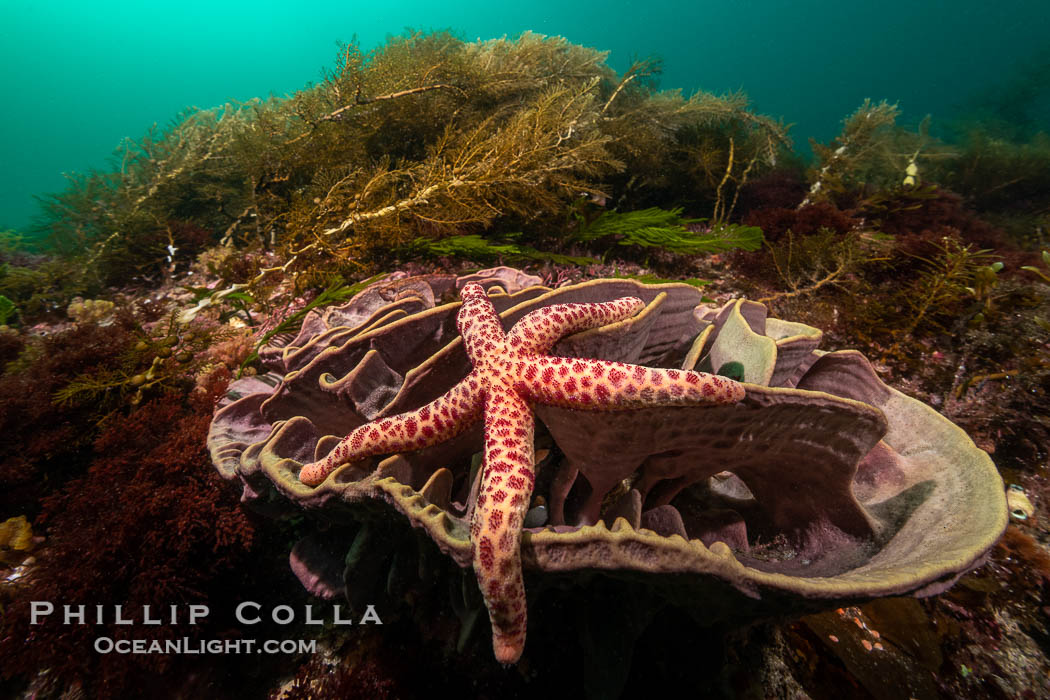
Starfish on Sponge with Marine Algae, Kangaroo Island, South Australia.
Image ID: 39245
Location: Kangaroo Island, South Australia
Of Jetties, Dragons and Ibuprofin
The next morning we awoke at the Edithburg Jetty on the Yorke Peninsula, one of the most famousest of all the jetties (piers) in South Australia, known for its incredible marine life on and under the pilings. My back was killing me for some reason. It was drizzling and our spectacular weather seemed to have gone. I bailed on the dives at Edithburg, began popping Ibuprofin, and did some gentle yoga in my tiny room. Good thing I bailed as others reported the water visibility was awful. Folks were a little dismayed as “the Edith” was one of the places we had hoped to see Leafy Sea Dragons which, for several of the group, was the creature they wanted to see on this trip more than any other. I think just one sea dragon was found at Edithburg, but just a few people. I was bummed and thought that might be it for my diving this trip.
After that blah day we sought to break the jinx and get back into some good water and weather, so we departed for the Fleurieu Peninsula to the east and Rapid Bay, home to Rapid Bay Jetty. And lo-and-behold we found ourselves with great water and weather again. My back had improved enough that I decided to try diving if the crew would toss my tank in the water and I would don it there to minimize the stress on the old spine. It worked and I was so grateful to be back in the water again. We spent two days diving the Rapid Bay Jetty and everyone managed to find Leafy Sea Dragons (Phycodurus eques) with the help of crew including a couple who drove down from Adelaide to join us. They basically knew where every leafy under the pier hangs out. Locals rule. I’m not a critter photographer and didn’t even bring a macro lens but I decided to give it my best shot with my 35mm lens. Also, I wanted to see if I could find some leafies on my own, no compass, no slate, no directions, just drop in and go look. So on the last two dives I asked if I could be dropped by myself at the end of the pier, at which time I set out slowly moving from piling to piling, wide-eyed and sipping the air in my tank. I found at least three different ones and gave myself a pat on the back and a gold star at the end of the day. There are many interesting critters under the Rapid Bay Jetty and a diver could make a career out of studying and photographing them all. It really is one of the world’s top dives in spite of its rather derelict and utilitarian appearance. I can’t wait to return and spend a few days more there.
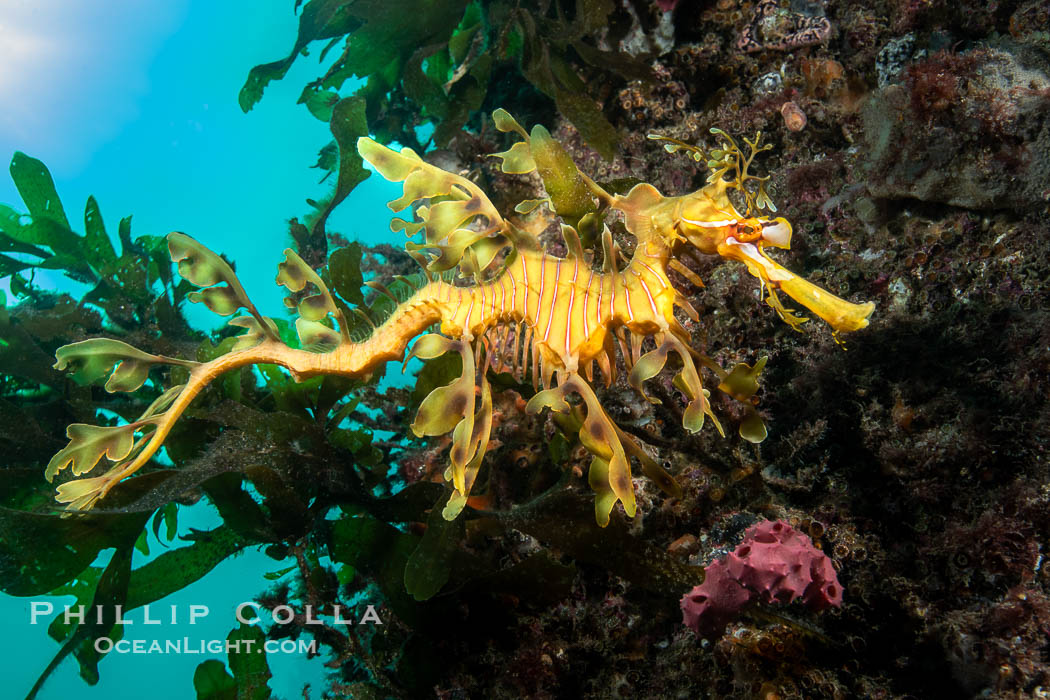
The leafy seadragon (Phycodurus eques) is found on the southern and western coasts of Australia. Its extravagent appendages serve only for camoflage, since it has a nearly-invisible dorsal fin that propels it slowly through the water. The leafy sea dragon is the marine emblem of South Australia.
Image ID: 39134
Species: Leafy seadragon, Phycodurus eques
Location: Rapid Bay Jetty, South Australia
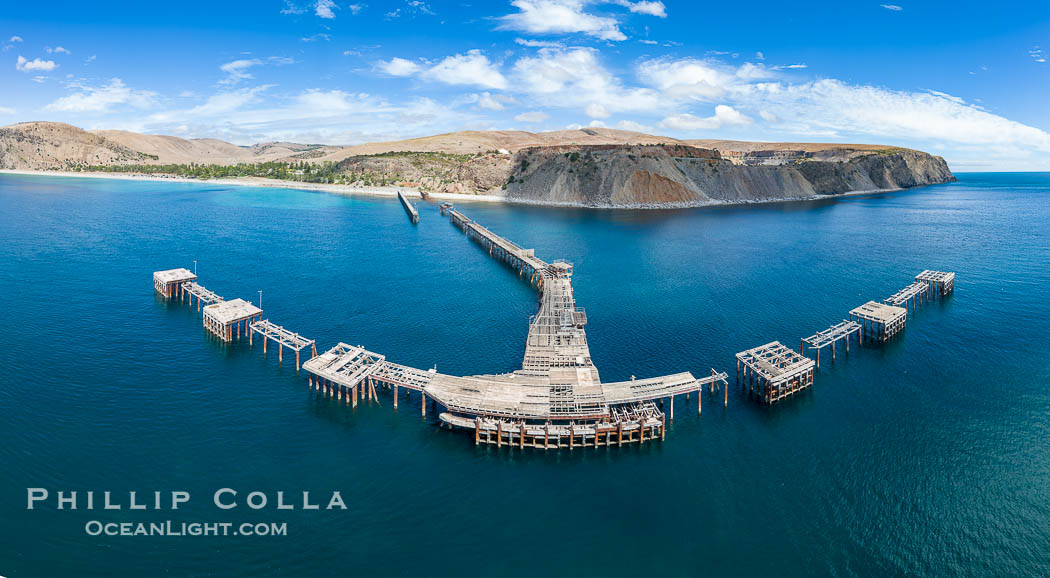
Rapid Bay Jetty Aerial Photo, South Australia. The now-derelict jetty (wharf, pier) at Rapid Bay is famous for great SCUBA diving, including opportunities to see leafy sea dragons.
Image ID: 39210
Location: Rapid Bay Jetty, South Australia
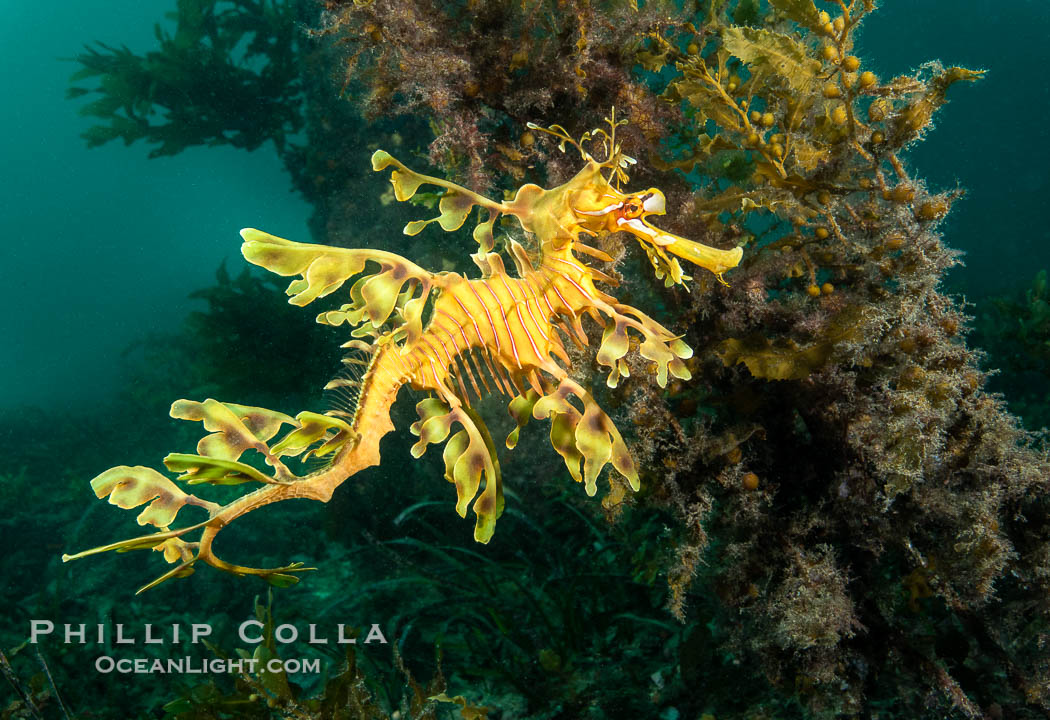
The leafy seadragon (Phycodurus eques) is found on the southern and western coasts of Australia. Its extravagent appendages serve only for camoflage, since it has a nearly-invisible dorsal fin that propels it slowly through the water. The leafy sea dragon is the marine emblem of South Australia.
Image ID: 39132
Species: Leafy seadragon, Phycodurus eques
Location: Rapid Bay Jetty, South Australia
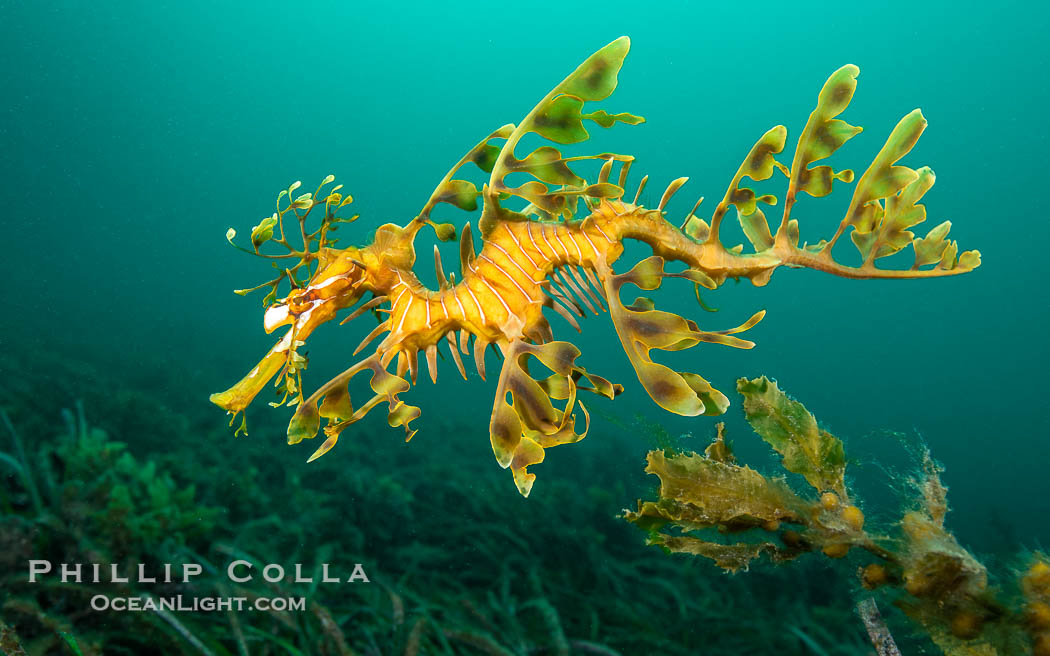
The leafy seadragon (Phycodurus eques) is found on the southern and western coasts of Australia. Its extravagent appendages serve only for camoflage, since it has a nearly-invisible dorsal fin that propels it slowly through the water. The leafy sea dragon is the marine emblem of South Australia.
Image ID: 39135
Species: Leafy seadragon, Phycodurus eques
Location: Rapid Bay Jetty, South Australia
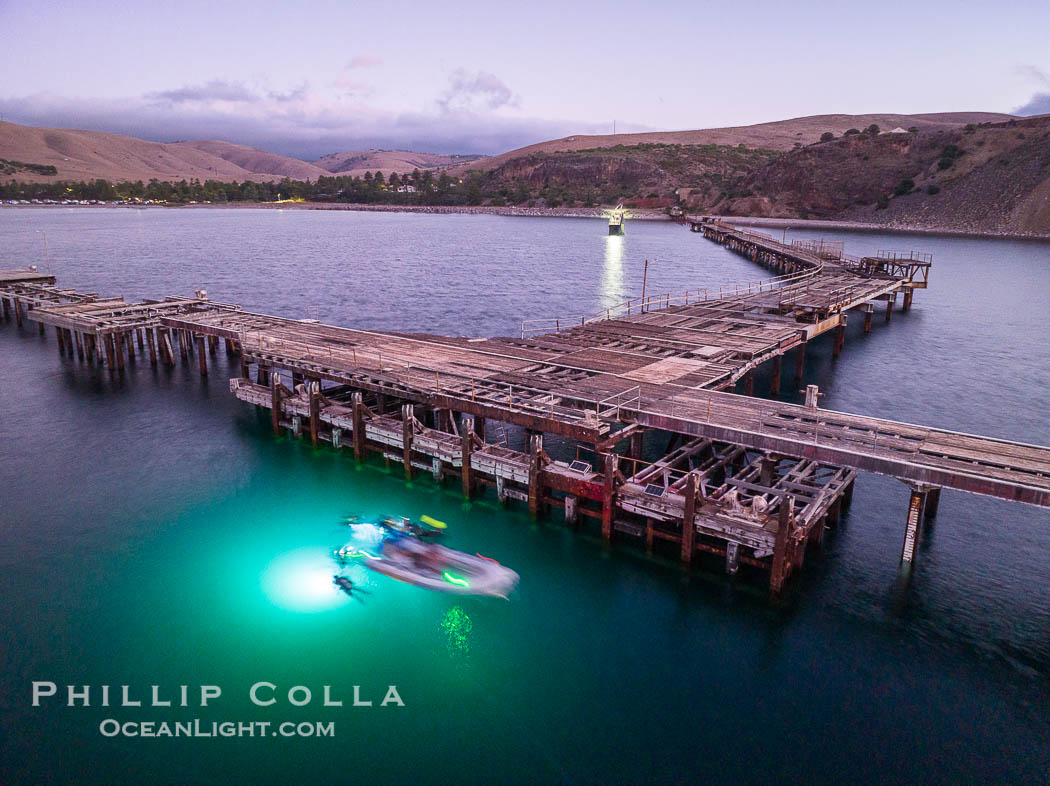
Rapid Bay Jetty Aerial Photo, South Australia. The now-derelict jetty (wharf, pier) at Rapid Bay is famous for great SCUBA diving, including opportunities to see leafy sea dragons.
Image ID: 39217
Location: Rapid Bay Jetty, South Australia
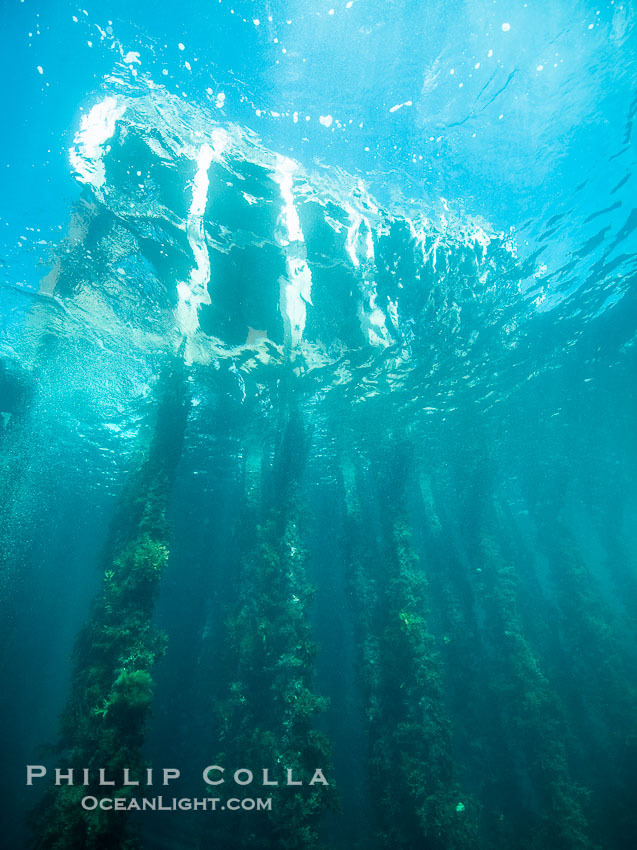
Rapid Bay Jetty Underwater Photo, South Australia.
Image ID: 39219
Location: Rapid Bay Jetty, South Australia
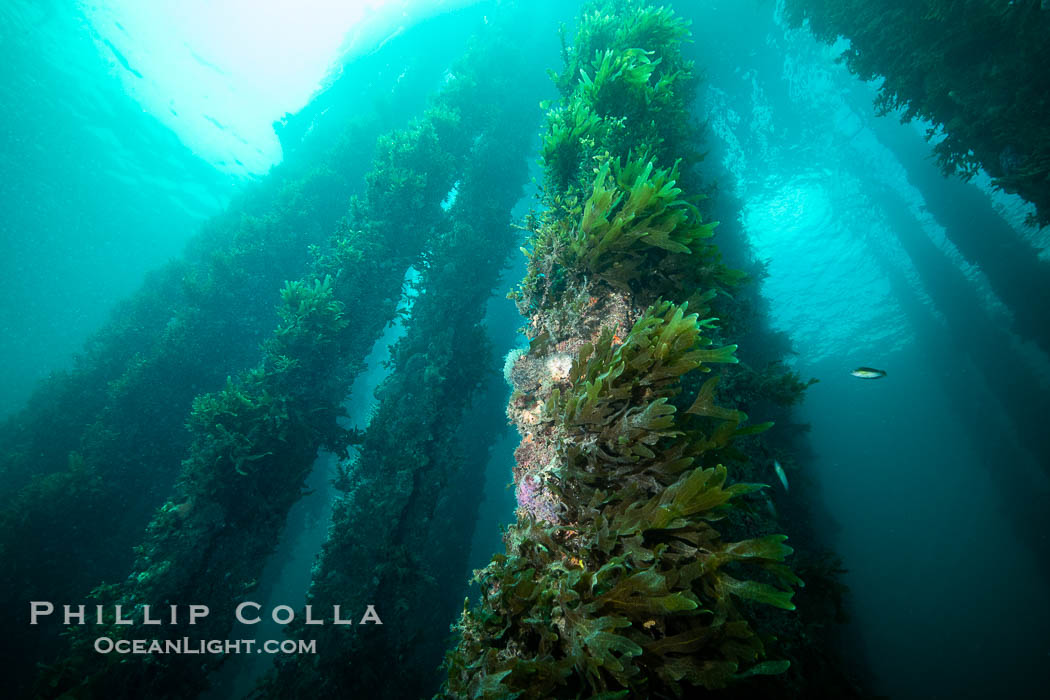
Rapid Bay Jetty Underwater Photo, South Australia.
Image ID: 39220
Location: Rapid Bay Jetty, South Australia
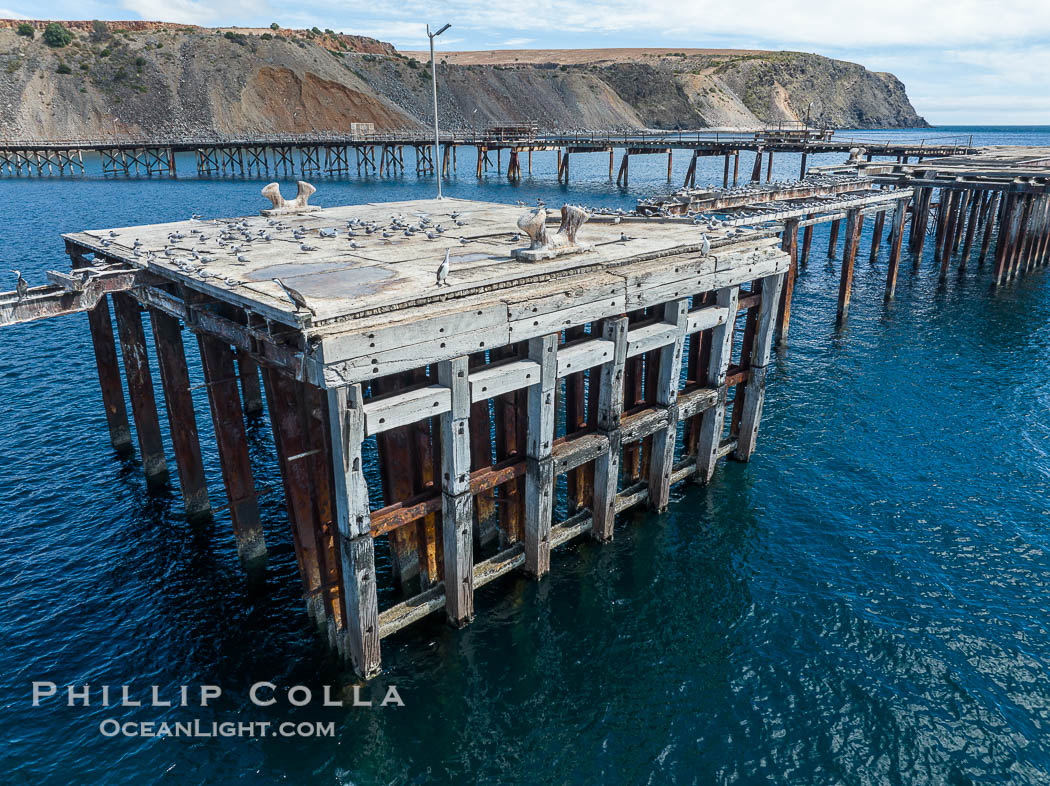
Rapid Bay Jetty Aerial Photo, South Australia. The now-derelict jetty (wharf, pier) at Rapid Bay is famous for great SCUBA diving, including opportunities to see leafy sea dragons.
Image ID: 39292
Location: Rapid Bay Jetty, South Australia
Great White Sharks
We left Rapid Bay for the South Neptune Islands in the late afternoon and had an uneventful overnight crossing. I was out on deck early the next morning and treated to a nice sunrise over the low, seemingly unexceptional pair of small islands. In went the cages and the burley (chum) began to be dispersed. Soon the exceptional nature of these islands became evident as we had a shark or two around the boat within minutes and at least one remained around the boat all day. The Neptune Islands are where great white shark cage diving originated (with Rodney Fox) and, as of this writing, is the only place in the world where it actively occurs with success (South Africa’s sharks have been run off by killer whales, and Mexico has closed Guadalupe Island to all diving). During the day everyone that wanted to was able to make a couple cage dives in the “submerged cage” which was lowered to about 70′. The water at depth was clear and blue. There was a lot of wind and the boat would slowly swing on the anchor 90 degrees or more which meant the submerged cage sailed over the ocean bottom. It was a really neat sensation and I would love to repeat it, perhaps on a future trip on the boat for just sharks. As we swung under the boat 70′ deep and 20′ above the bottom we occasionally would have a shark come close enough to the cage for a photo or two, and I eeked out some images on my first submerged cage attempt. None on the second though. The crew was impressive. Cage diving is the bread-and-butter of the M/V Rodney Fox and it showed, they had us rotating in/out for our submerged dives like clockwork.
The surface cage was turbid, rocking and rolling in the swell and as the boat swung, with lots of bubbles and chum. But we had a young shark that was repeatedly passing very close to the cage. I spent as much time in the surface cage as my body would allow, 4-5 hours I think, even skipping lunch to stay in the water. I was usually alone in the cage which was a real treat since no matter how large a shark cage is its never large enough. At the end of the day I was zonked. It was a very fun day and I got lots of very close looks at beautiful sharks even if the photos are marginal.
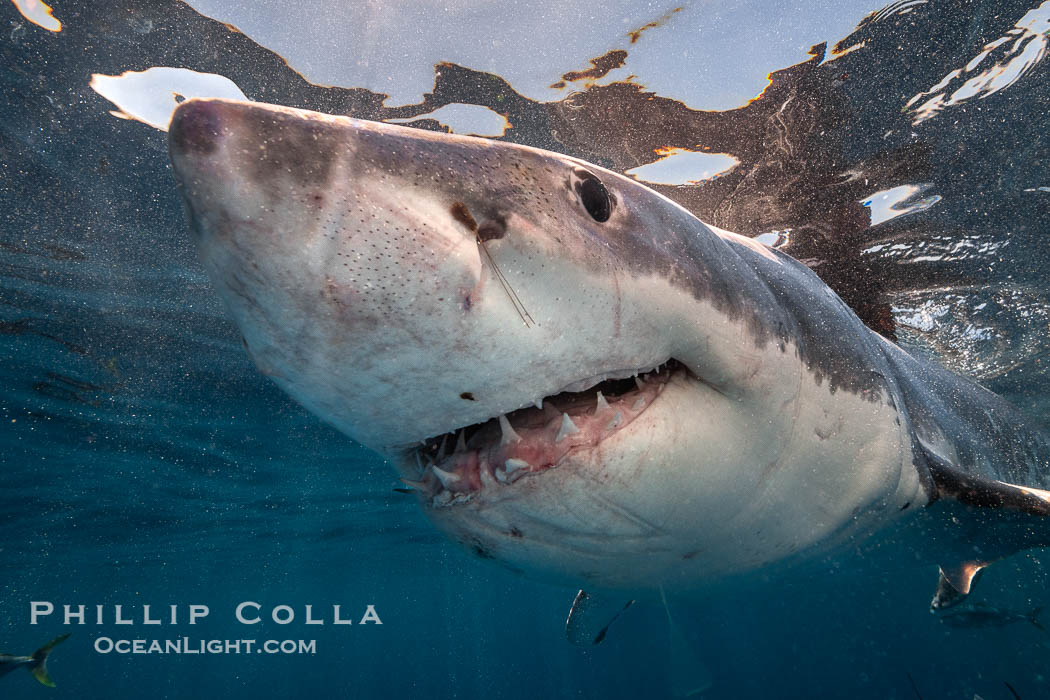
Great White Shark, South Neptune Islands, South Australia.
Image ID: 39140
Species: Great white shark, Carcharodon carcharias
Location: South Neptune Islands, South Australia
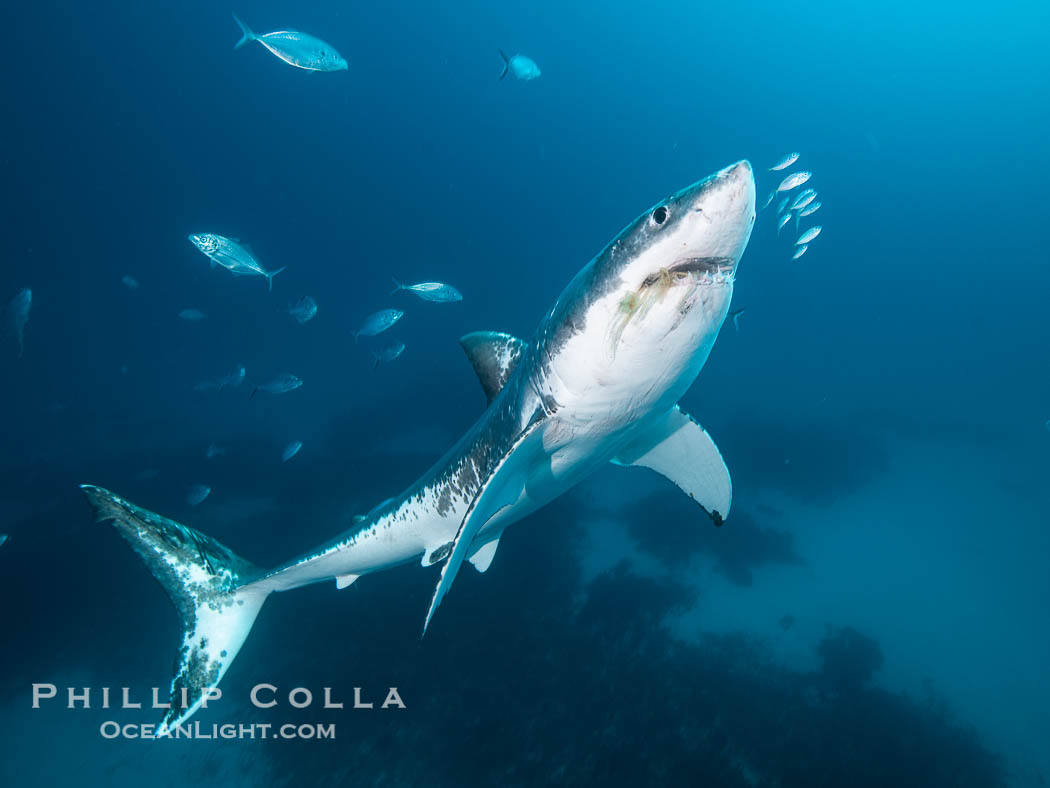
Great White Shark, South Neptune Islands, South Australia.
Image ID: 39141
Species: Great white shark, Carcharodon carcharias
Location: South Neptune Islands, South Australia
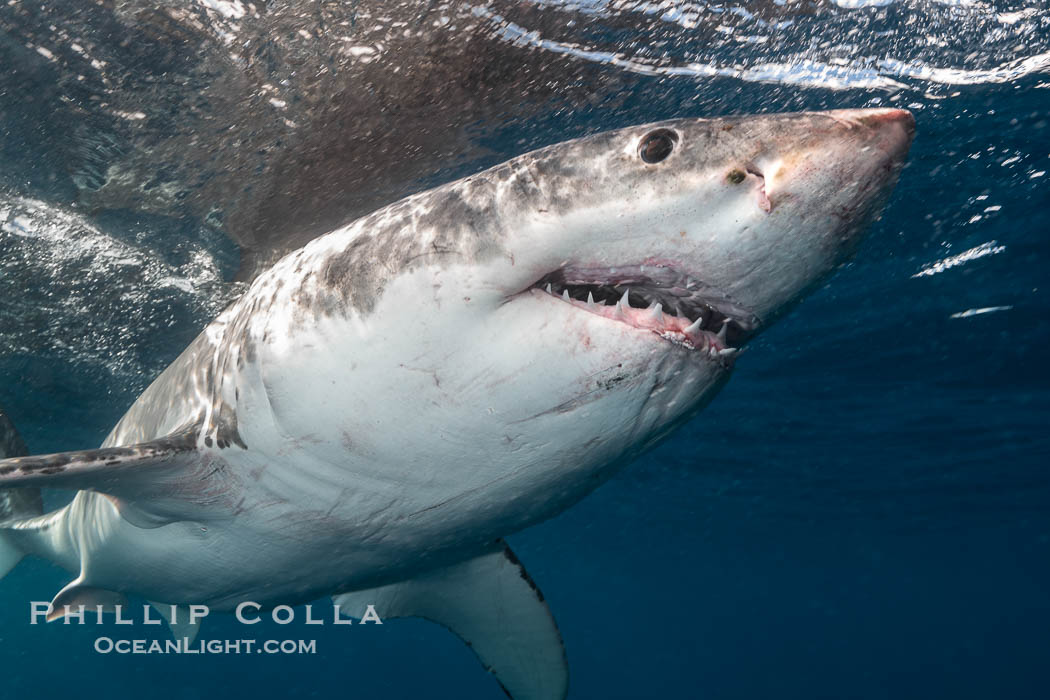
Great White Shark, South Neptune Islands, South Australia.
Image ID: 39142
Species: Great white shark, Carcharodon carcharias
Location: South Neptune Islands, South Australia
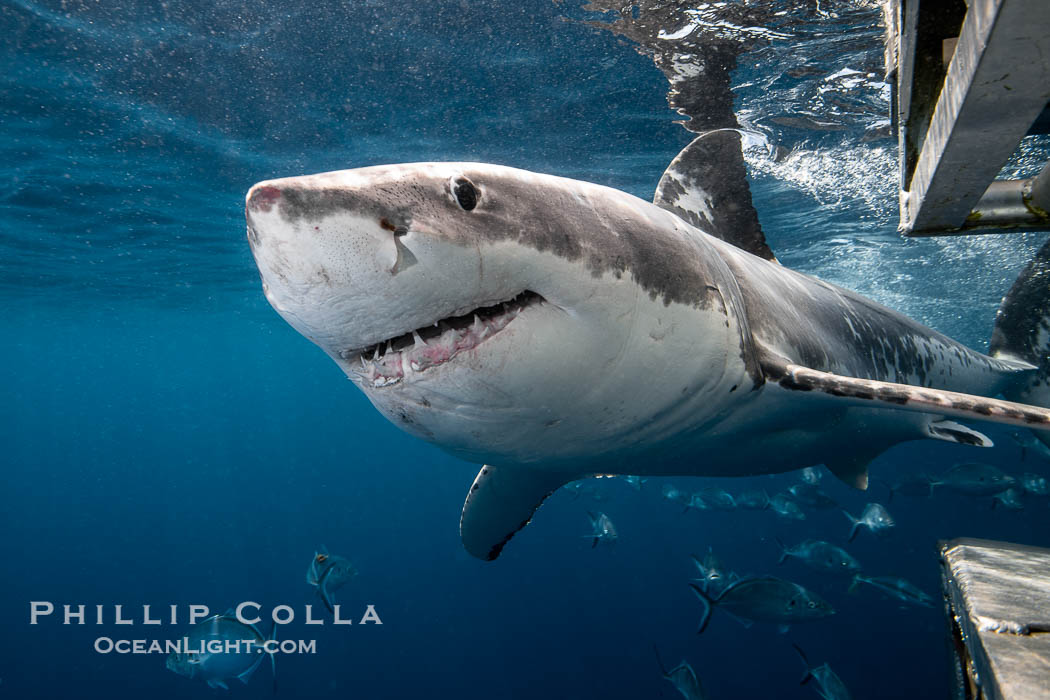
Great White Shark, South Neptune Islands, South Australia.
Image ID: 39143
Species: Great white shark, Carcharodon carcharias
Location: South Neptune Islands, South Australia
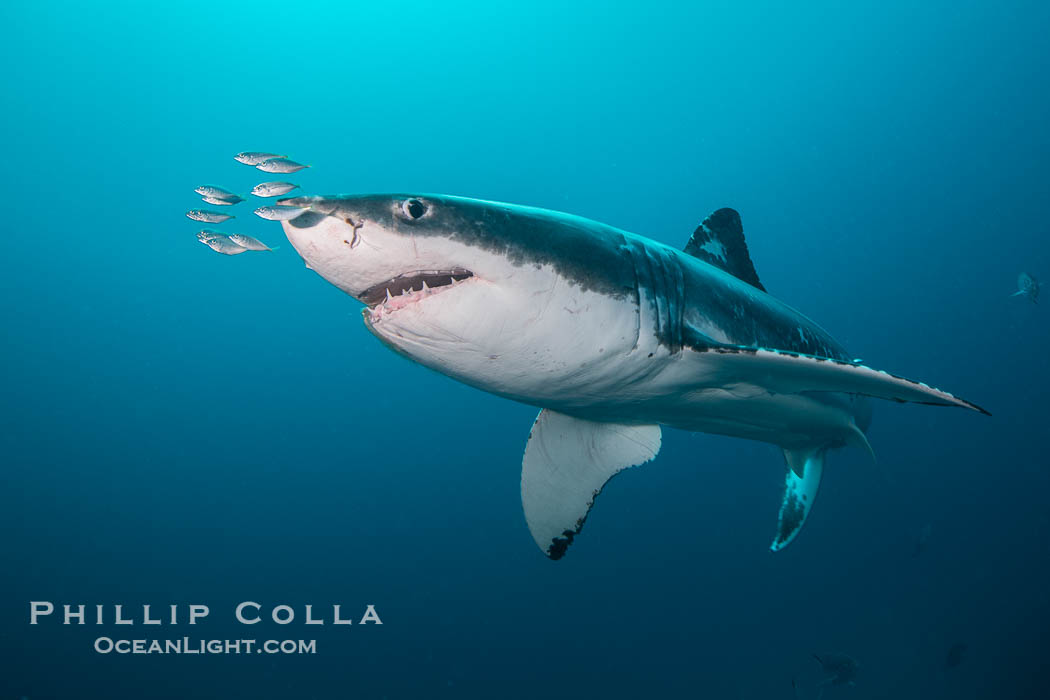
Great White Shark, South Neptune Islands, South Australia.
Image ID: 39144
Species: Great white shark, Carcharodon carcharias
Location: South Neptune Islands, South Australia
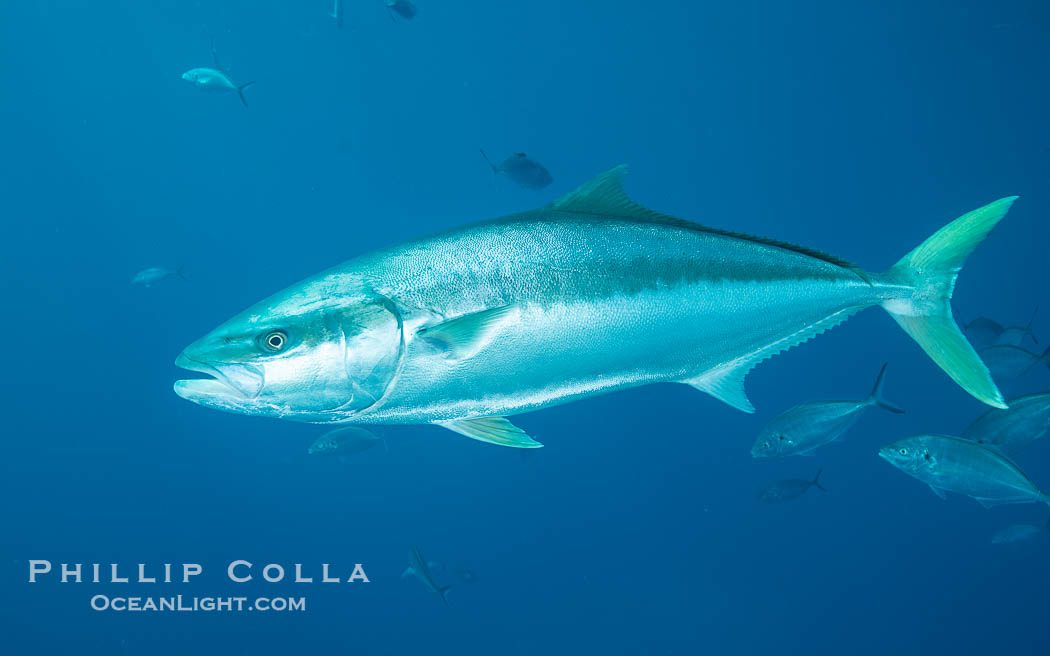
Yellowtail Kingfish at the South Neptune Islands.
Image ID: 39199
Species: Yellowtail, Kingfish, Seriola lalandi
Location: South Neptune Islands, South Australia
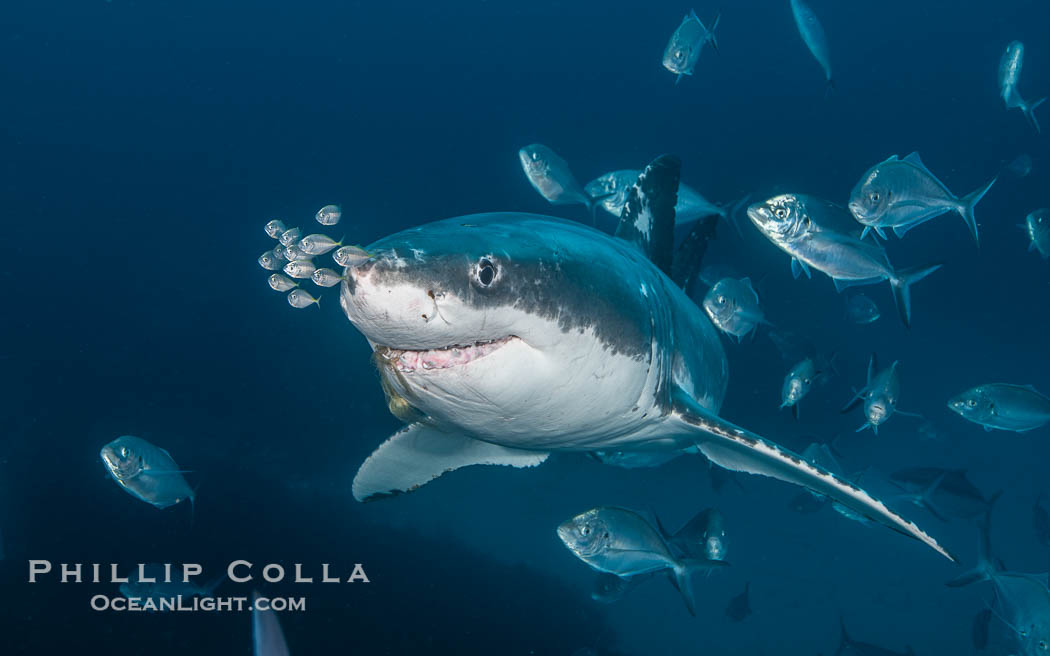
Great White Shark, South Neptune Islands, South Australia.
Image ID: 39150
Species: Great white shark, Carcharodon carcharias
Location: South Neptune Islands, South Australia
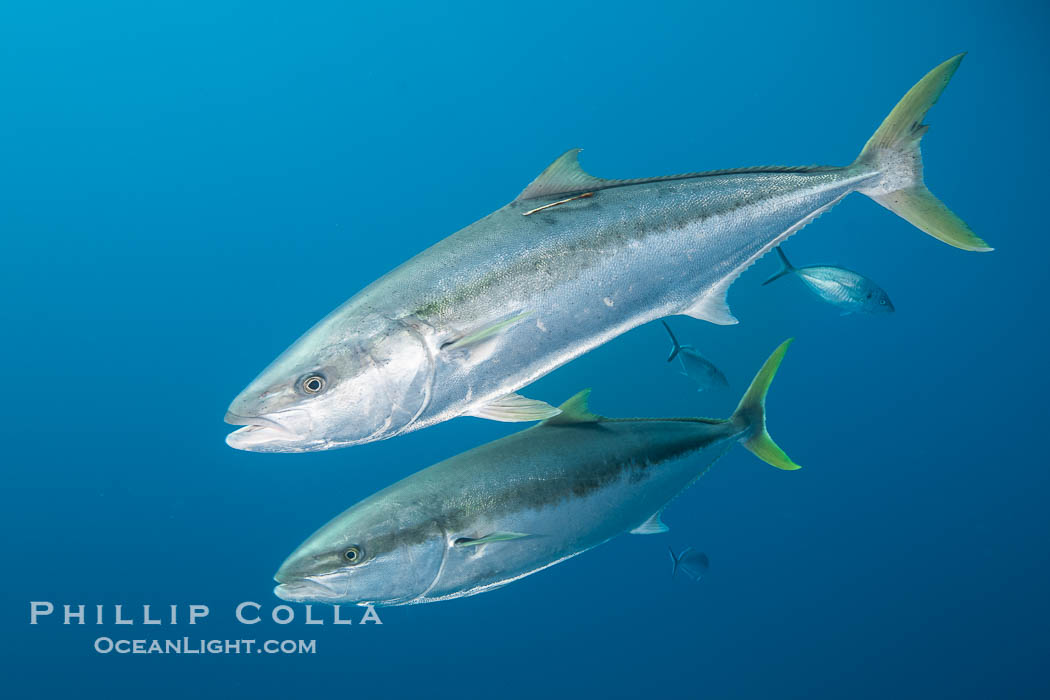
Yellowtail Kingfish at the South Neptune Islands.
Image ID: 39201
Species: Yellowtail, Kingfish, Seriola lalandi
Location: South Neptune Islands, South Australia
Australian Sea Lions (Again)
At the end of our shark day at the South Neptune Islands we headed north in order to make one final stop at Grindal Island the following morning to visit the sea lions again. There were fewer of us in the water and that may have been a good thing as the sea lions seemed more engaged and interested in us than before. We were freediving again, but this time I had a pair of strobes so the images are a little different in feel compared to my earlier ones. We had a wonderful session with the sea lions and then motored back to Port Lincoln. We bid farewell to the M/V Rodney Fox and said our thanks to the captain and crew. And what a superb crew it was: they took very good care of us on the boat and in the water, made delicious healthy food in great amounts, and worked around the challenges of the weather to deliver the best trip ever. We had a surprise when we reached Adelaide: a wine and cheese reception with Andrew Fox and Mark Tozers at the Rodney Fox Shark Museum in Adelaide. The museum is an impressive collection of diving history, vintage equipment, decades-old custom camera housings, spearfishing historical photos and guns, shark cages past and present, and even artifacts from wrecks like the Lusitania. It was a lot of fun.
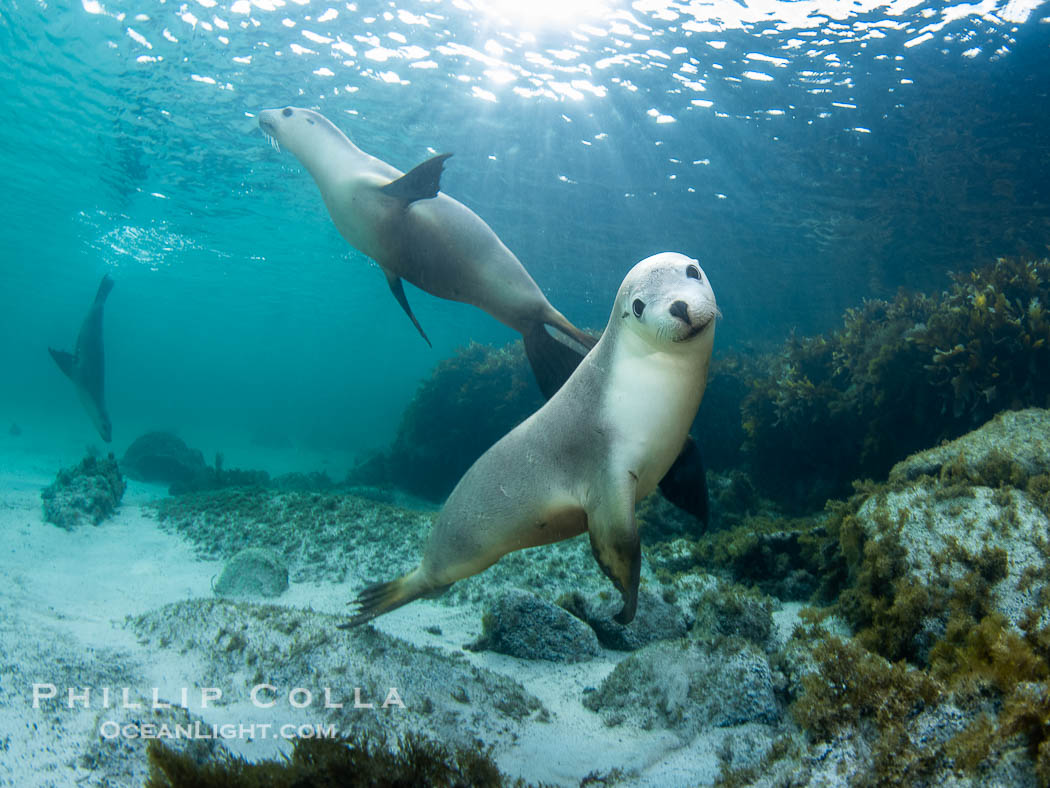
Australian Sea Lions, Grindal Island. Australian sea lions are the only endemic pinniped in Australia, and are found along the coastlines and islands of south and west Australia.
Image ID: 39157
Species: Australian Sea Lion, Neophoca cinearea
Location: Grindal Island, South Australia
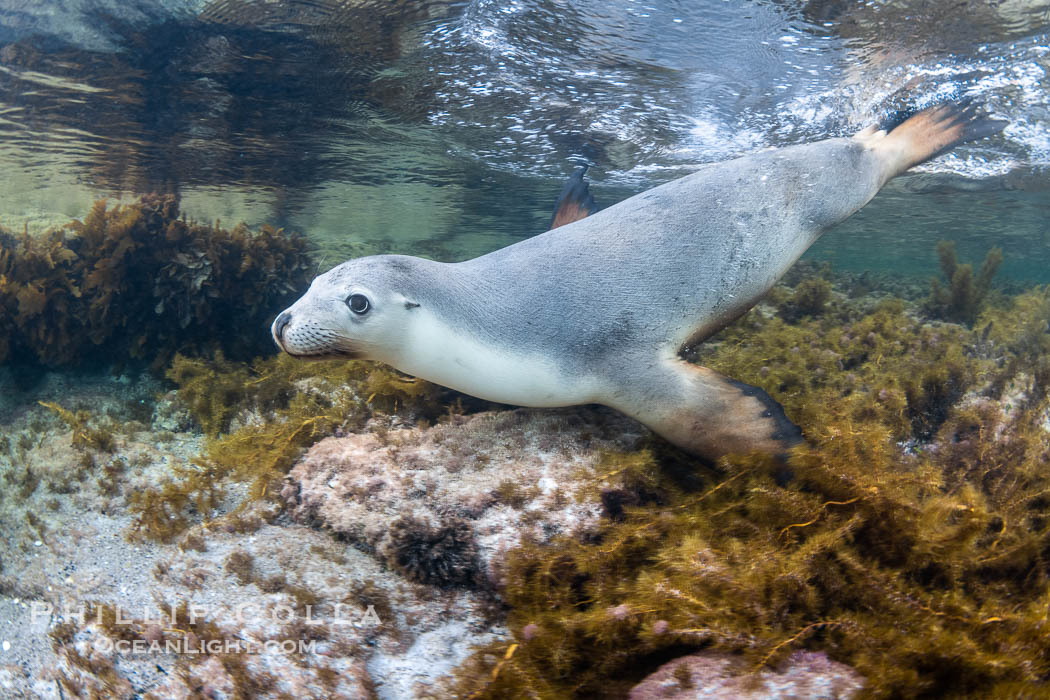
Australian Sea Lion Underwater, Grindal Island. Australian sea lions are the only endemic pinniped in Australia, and are found along the coastlines and islands of south and west Australia.
Image ID: 39158
Species: Australian Sea Lion, Neophoca cinearea
Location: Grindal Island, South Australia
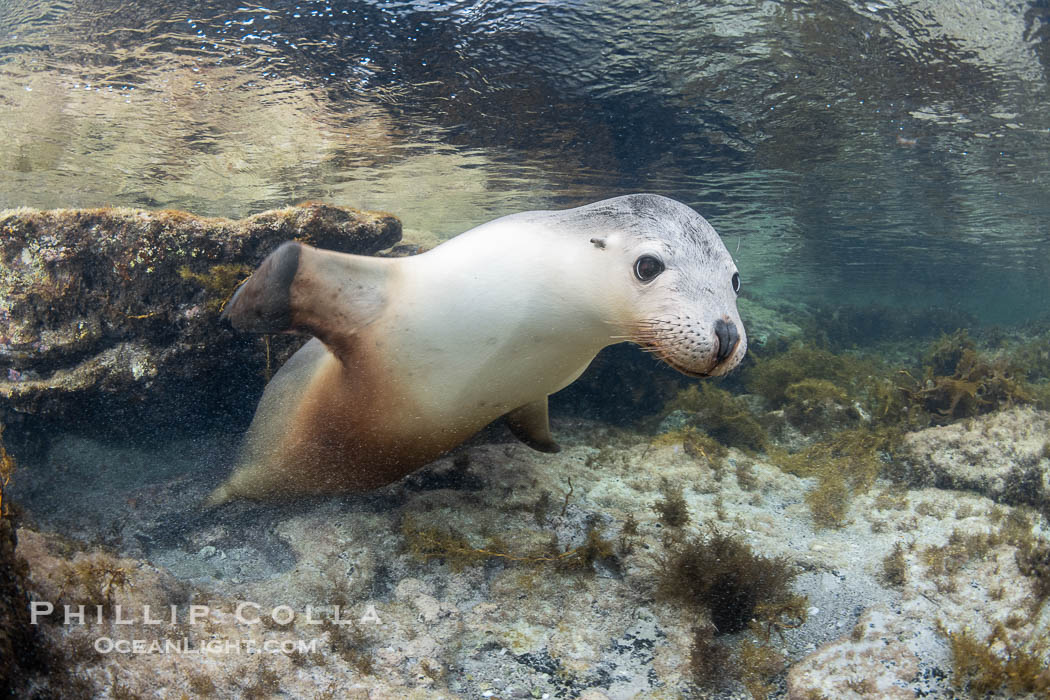
Australian Sea Lion Underwater, Grindal Island. Australian sea lions are the only endemic pinniped in Australia, and are found along the coastlines and islands of south and west Australia.
Image ID: 39160
Species: Australian Sea Lion, Neophoca cinearea
Location: Grindal Island, South Australia
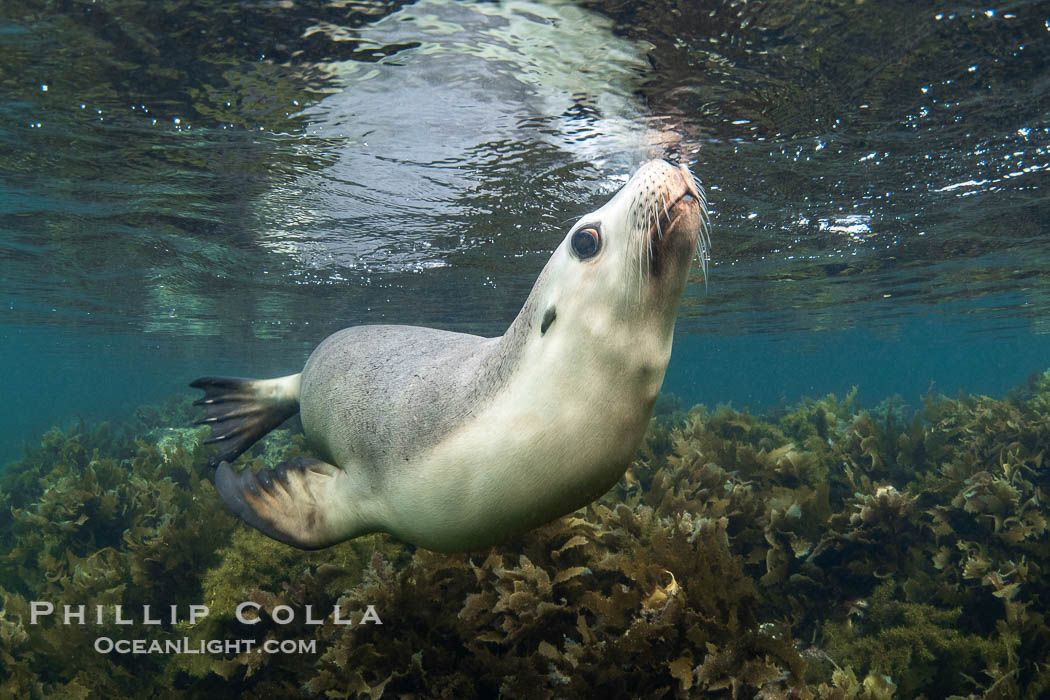
Australian Sea Lion Underwater, Grindal Island. Australian sea lions are the only endemic pinniped in Australia, and are found along the coastlines and islands of south and west Australia.
Image ID: 39161
Species: Australian Sea Lion, Neophoca cinearea
Location: Grindal Island, South Australia
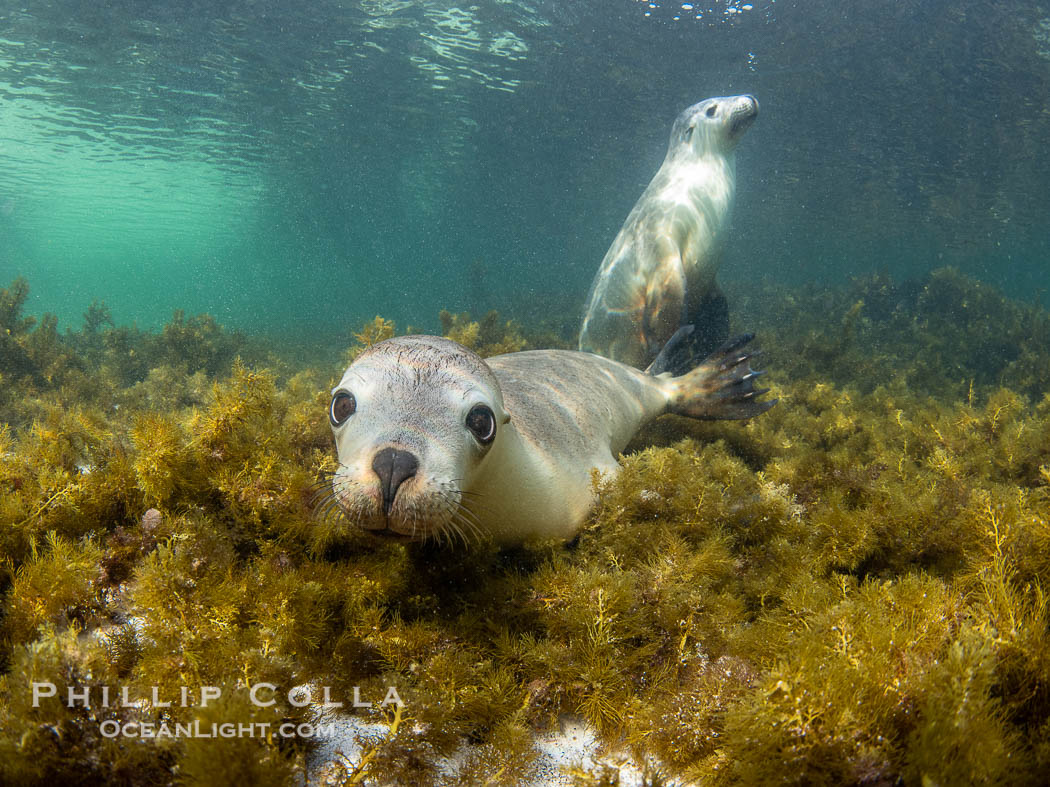
Australian Sea Lions in Kelp, Grindal Island. Australian sea lions are the only endemic pinniped in Australia, and are found along the coastlines and islands of south and west Australia.
Image ID: 39165
Species: Australian Sea Lion, Neophoca cinearea
Location: Grindal Island, South Australia
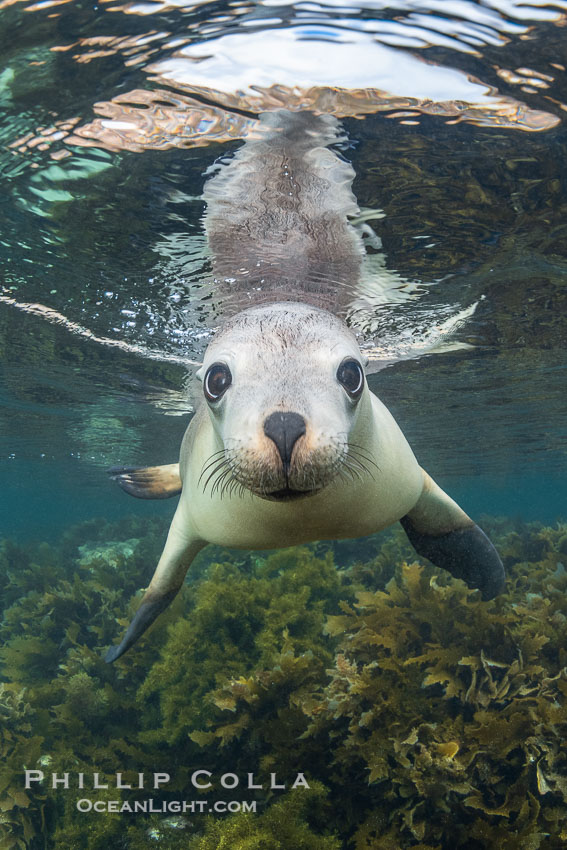
Australian Sea Lion Underwater, Grindal Island. Australian sea lions are the only endemic pinniped in Australia, and are found along the coastlines and islands of south and west Australia.
Image ID: 39166
Species: Australian Sea Lion, Neophoca cinearea
Location: Grindal Island, South Australia
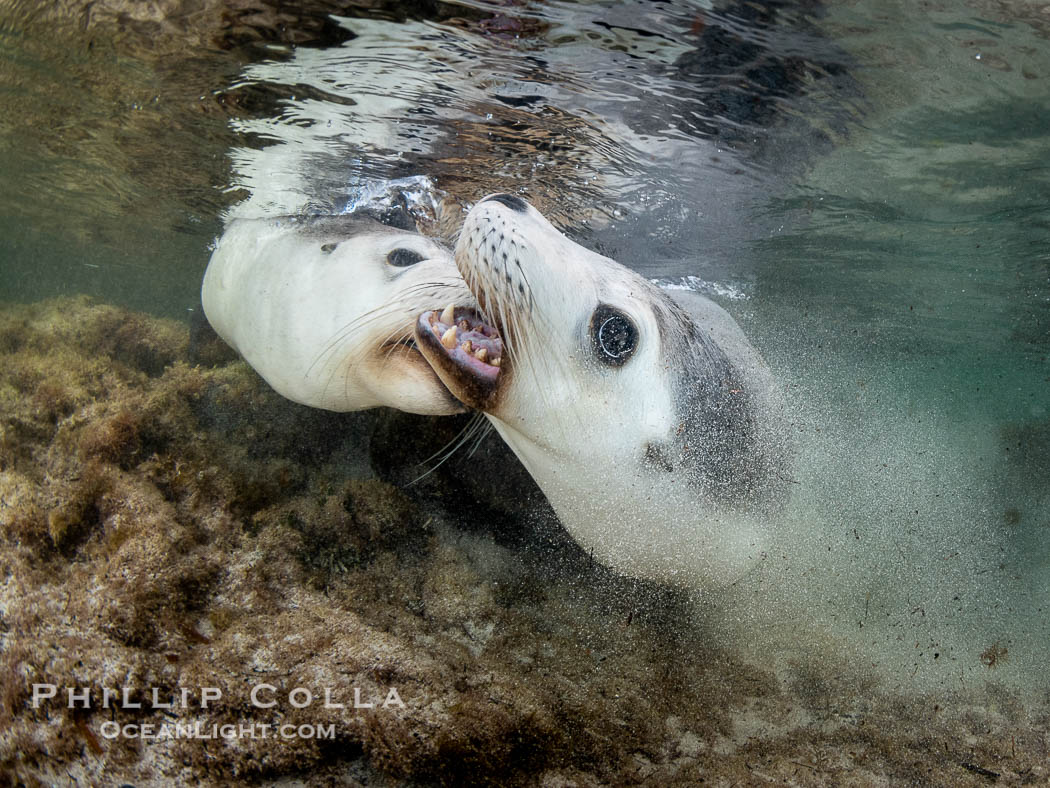
Australian Sea Lions Playing Underwater, Grindal Island. Australian sea lions are the only endemic pinniped in Australia, and is found along the coastlines and islands of south and west Australia.
Image ID: 39170
Species: Australian Sea Lion, Neophoca cinearea
Location: Grindal Island, South Australia
